MEET US AT ATLASSIAN TEAM 24
Las Vegas | April 30 - May 2
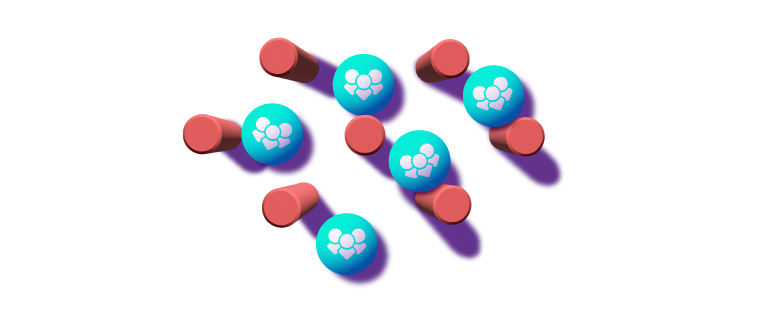
Agile workflow

10 min read
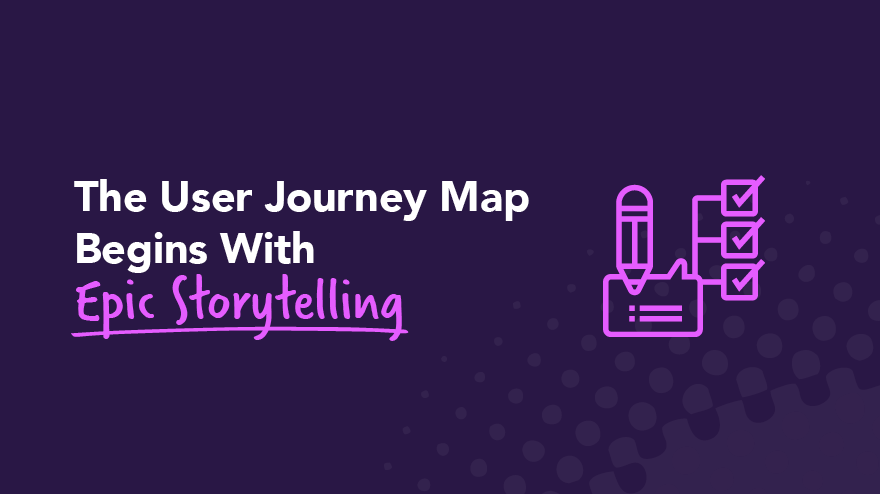
The User Journey Map Begins With Epic Storytelling

Storytelling is an excellent way to describe anything because stories conjure detailed images. Once you create a visual association, cognitive processes leap into action to make the story in the user journey map a reality that is easy to track.
This is what the customer journey map (CJM) is all about—epic storytelling that involves comprehensive planning to capture the design process and deliver a unique customer experience.
Creating a customer journey map (also called the user journey map) involves planning a project from the user’s point of view and using personas, epics, features, user stories, and tasks. This visualization process also involves several stakeholders as user personas on the road to planning perfection.
By the end of the project, your CJM should help achieve business goals and exceed customer expectations with enough touchpoints along the way to motivate satisfaction. The process is a little like rubbing Aladdin's lamp to manifest your deepest wishes.
What is the user journey map?
In contrast to the flat backlog, the customer journey map makes the vision for your project come alive in real-time. You get to use creative storytelling to generate a magical customer experience through visual representations.
Project team members accomplish this by developing an empathy map to an almost-perfect plan from the customer’s perspective. User journey mapping captures the customer’s emotional state, which helps identify touchpoints and pain points. Teams then use these points to elevate the customer experience.
Unlike rubbing a genie’s lamp for results, you get to use convenient software to develop a service blueprint where design thinking reflects a shared vision between stakeholders.
The starting point is to anticipate customer interactions with the mobile app or other e-commerce project development story. That’s why user research is another vital element in developing the customer journey map template.
This customer journey map template should also draw valuable information from the empathy map and the experience map. An in-depth understanding of the KPIs and metrics that go into storytelling helps direct product usability through appreciating customer interactions with the product.
Customer interactions generate feedback, which leads to understanding customer's needs. Additional touchpoints can then be included or modified to build on the overall project outcomes.
Essentially, you use hierarchical storytelling on a magical customer journey map template to meet real-life expectations that resonate with the customer experience.
The customer journey mapping hierarchy
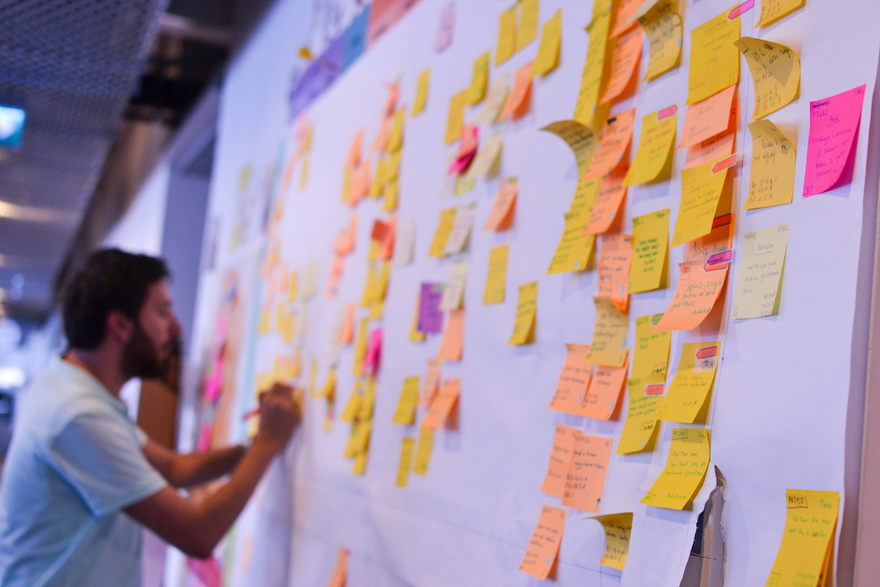
When beginning the journey to create the ideal customer experience, team members should visualize the project from the user’s current state. Once you capture the essence of the current customer perspective, you can better understand what needs to change and improve.
A simple example may be a travel app that encompasses services such as travel agent services, flight bookings, and accommodation in a geographical area (present state). The client wants to create a future state app which contains tourist activities to augment the customer experience. The basic process will then look like this:
For app customers who want a value-add experience with our travel app which is a helpful resource that provides tips on local tourist activities.
Your user journey map hierarchy involves four building blocks to meet customers’ needs:
- Understanding user personas or buyer personas
- Developing themes and epics to address touchpoints
- Using steps or features to support epics and the narrative flow
- The stories in the customer journey map
1. Understand user personas or buyer personas
The user journey map starts with defining the user personas or buyer personas as vital stakeholders in project development. These customer personas represent the top of the hierarchy, which is the starting point of the customer journey map.
A detailed visual reflection of the user persona is vital to getting your final product right. To deliver this, you need to walk through the story mapping journey from the customer’s perspective. This helps avoid the nasty consequences of inadequate planning that results in sub-optimum deliverables and unhappy teams and customers.
To understand user personas, you need to identify the various potential touchpoints in the journey and customer pain points through use cases and feedback. You’ll need to anticipate as many potential scenarios as possible from the buyer persona’s perspective.
Although the “who,” “what,” and “why” are instrumental in defining the user story, it all begins with visualizing user personas and thinking about customer behaviors, demographics, needs, and goals.
Once you define who your customer personas are, you can follow up with themes and epics to deliver on customer expectations. The epics are the heroes or heroines in this story visualization method.
2. Develop themes and epics to address touchpoints
The customer journey map positions epics at the top of the storyboard because they are vital to creating a great project.
Team leaders must consult with the client and relevant stakeholders to develop an overarching project theme, to translate into epics. Epics flow through this theme from left to right. These epics show large bodies of work broken down into smaller features which can meet continuous delivery value.
Epics are also strategic directives that begin with the current state of an issue and move the situation into a desirable future state. This epic future state is built on tactics, or features and tasks, which team members use to clarify project requirements and move toward that magical future state of project success.
Before team members can move forward, they need to get the epics right. Epics cover three fundamental foundations: user persona, product, and design requirements, which reflect visually on the user journey map.
The epics should meet several foundational requirements:
- Follow through by aligning the overall business goals with detailed buyer personas and demographics
- Broadly outline the user persona’s needs
- Meet specific customer needs by addressing touchpoints and pain points
- Include specific functions, features, and benefits
- Produce a future state ideal project
After designing your heroic epics to cover the project's primary goals, you can start breaking these into steps that integrate with the overall narrative flow of the user story.
3. Use epics for highlighting the narrative flow
Once you clearly define your epics, it’s time to generate narrower steps or features.
As your epics move from left to right, you must define each of the necessary steps to accomplish business goals. This customizable process uses epics to relay the user journey over the project duration to reflect project outcomes.
The customer journey map template also forms the basis of the ideal user story as you transition from epics to features. The features originate from the epics, which is why the epics are the heroes in this story. They “save” customers with excellent planning and deliverables.
At its most basic level, features should include the following elements:
- Deliverables that add value and support epics completion
- Generate business value by considering KPIs, metrics, customer acquisition, and retention
- Demonstrate sufficient definition for team members to follow through on time estimates and complete tasks within one to three sprints
- Team members must be able to test the results of their features
- Establish test criteria for each feature to set acceptable quality standards that meet customer expectations before moving to the next step
In short, the user acceptance criteria (UAC) in the user journey map should include a brief item value description, a feature benefit explanation, and the feature quality completion points that team members must achieve.
Only once you nail these details can you tell the user stories from the customer's perspective. Similarly, only once you complete these three fundamental building blocks in the customer journey map can you focus on user stories and business goals that include customer satisfaction and retention.
4. Begin storytelling through the user journey map
After the third step in the hierarchy of the user journey map, the actual user stories begin. This is the final step in design thinking related to the visualization of epics into manageable stories and tasks.
To state the buyer persona case, team members must understand the “who,” “what,” and “why” of the customer experience. Understanding and defining the customer personas forms the basis of user story creation, enabling delivery of the most acceptable product possible.
Developing the best story relies on creating user stories that highlight the customer experience and use cases that highlight the finer details of system performance.
In the story creation phase, team members assume the customer’s perspective to define requests. Team members can consider exploring social media to understand customer behavior and experiences to use as story inputs. User stories can also include enabler tasks to augment feature completion.
Team members typically write their user stories to complete these in short sprints. Sprint completion involves task completion for release before completing one epic and moving to the next, except where concurrent work is possible.
Ultimately, the user journey map must tell the customer’s story of how their need will be met by creating or modifying a product, process, service, or system feature. New developments must follow through on the formula of “as a…” “I want…” “so that...”
As a new Agile team member , I want to understand my and other team member's roles so that I am clear about my tasks and the responsibilities of other team members.
After generating user stories, team members can break tasks into even smaller parts to facilitate work deliverables and reduce potential churn that negatively impacts customer retention.
As the user journey map progresses, the stories should clearly outline the activities for completion, always linking these back to buyer persona goals. The smaller, granular tasks then relate to user behaviors, and the outcomes link to each step of the process to reinforce what deliverables will meet customer needs within set timeframes.
During the customer journey map, stories can be split further to accomplish greater clarity.
Bottom line: The customer journey map
Through the customer journey mapping process, you should capture the primary epics of the user journey in the story map visualization.
You will need to develop the user story map holistically and interrupt it with additions and subtractions in an iterative fashion. This iterative user story mapping process helps minimize churn as you continue to update your story as you move forward.
Once the project is done, you need to test the product on potential customers, gather customer feedback, and improve the user journey map.
The benefits of carefully planning the customer experience through a visual format are exponential.
Tell your project story with Easy Agile User Story Maps for Jira
The customer journey should highlight the ideal user experience. To do this, the user story map should incorporate the project from user personas to achieve stories with valuable touchpoints as markers along the way.
Once the visual representation is done, it should validate the service blueprint for the customer journey mapping process through the current and future states of the project.
Throughout the project, your team should create a unique user journey that delivers the ultimate customer experience and exceeds customer expectations.
Try Easy Agile TeamRhythm and Personas today to make your customers' stories come alive with magic.

Why User Story Mapping?

Anatomy of an Agile User Story Map

What is User Story Mapping?
Subscribe to our blog.
Keep up with the latest tips and updates.
- Online Degree Explore Bachelor’s & Master’s degrees
- MasterTrack™ Earn credit towards a Master’s degree
- University Certificates Advance your career with graduate-level learning
- Top Courses
- Join for Free
Creating User Journey Maps: A Guide
User journey maps help you harness empathy to gain valuable insights about your customers and your product.
![user journey map agile [Featured image] A person in a wheelchair draws elements of a user journey map for a team of colleagues](https://d3njjcbhbojbot.cloudfront.net/api/utilities/v1/imageproxy/https://images.ctfassets.net/wp1lcwdav1p1/3WaTus0NXRo4tDa3cLz8jB/8bdf8b7010b5888baa5c0413d6d4cfb8/User_journey_mapping.jpg?w=1500&h=680&q=60&fit=fill&f=faces&fm=jpg&fl=progressive&auto=format%2Ccompress&dpr=1&w=1000)
One of the biggest skills you’ll leverage as a UI/UX designer is your ability to empathize with the people using the products you design. Creating user journey maps can help you harness that empathy and transform it into valuable insights about your customers and product. Let’s take a closer look at what a user journey map is and why it’s an important tool in the UX designer’s toolbox.
What is a user journey map?
A user journey map gives a visual representation of a customer’s experience. This visualization might cover a customer’s entire relationship with a brand or focus on a select experience they might have while interacting with an app or website. No matter the type, user journey maps serve as a useful tool for understanding user needs and pain points and ultimately optimizing user experience (UX).
Get started in UX: Google UX Design Professional Certificate
Why create user journey maps?
The main job of a UX designer is to make products intuitive, functional, and enjoyable to use. By creating a user journey map, you’re thinking about a product from a potential customer’s point of view. This can help in several ways.
User journey maps foster a user-centric mentality . You’ll focus on how a user might think and feel while using your product, as well as what goals they’re trying to achieve and what obstacles they might face along the way.
User journey maps create a shared vision for your company . This visualization can serve as a point of reference for different team members and stakeholders throughout the product development process.
User journey maps can uncover blind spots . Taking the time to map out how a user interacts with your product (and how they feel doing so) may reveal design flaws or new opportunities you hadn’t considered.
Still not convinced? Listen to Michael, an interaction designer at Google, explain the importance of user-centric design.
Types of journey maps
Journey maps can be as unique and creative as the products you’re designing. While there’s not one boilerplate template for a user journey, you will find a few main types of these maps.
A UX journey map focuses on the user experience of a specific product, typically an app or website. With these types of maps, you can gain insight into how a customer interacts with your software and what they might find helpful or frustrating. This in turn helps you design software that’s simpler and easier to use.
A sales journey map follows the buyer’s journey through its typical stages: awareness, consideration, and decision. Marketing teams can use these maps to evaluate how customers interact with a brand across multiple communication channels to maximize sales.
A customer experience journey map offers a high-level view of a customer-brand relationship across time. A current-state customer journey map focuses on current customer interactions (and how they can be improved). Future-state customer journey maps can drive innovation by imagining new customer experiences.
Elements of a user journey map
As you begin to map out user journeys, you’ll likely find ways to customize your maps to your particular company, product, and customer base. Search for user maps on the web, and you’ll find a range of creative examples. But take a closer look and you’ll find that many of these maps have a few elements in common.
Persona: What segment of users are you trying to understand (current or target)?
Scenario: What interaction are you trying to map out (real or anticipated)?
Stages of the journey: What are the high-level phases of the scenario?
User actions: What actions can the user take in each stage of the journey?
User emotions and thoughts: What is the user’s emotional state as they move through the stages? What are they thinking in each stage?
Opportunities: Where can you improve the UX of your product or connect with your customer in a more effective way?
Internal ownership: Which team or team member will be responsible for enacting these changes?
Read more: 9 Essential Skills for UX Designers
How to create a user journey map
We’ve outlined what a user journey map is, why you might want to create one, and what elements you should include. Now let’s go through the basic steps to create your own user journey map.
1. Define the scope.
Creating a helpful user journey map starts with defining your goals. Are you mapping the journey of a new target user across the entire buyer’s journey? Or are you seeking to make a transaction on an app—transferring money for example—more intuitive? Being clear on your goals now can help give you more relevant insights once your map is complete.
Read more: What Is Scope Creep? Keeping Your Project Focused
2. Build user personas.
Typically, you’ll want a different map for each unique user type. Not all your customers will have the same needs (or the same ways of going about meeting those needs). Think about who your users are, and create a customer persona for each segment. This often starts with user research. Customer interviews, focus group discussions, surveys, and even prior customer feedback can help you develop these personas and better understand the customer perspective. User personas are sometimes referred to as buyer personas.
3. Define user goals, expectations, and pain points.
Once you have a better idea of who your target user is, spend some time thinking about what they want. What problem do prospective customers have that your product or service can solve? What expectations might they have as they begin their journey? What problems might they face, or what about your product might cause them frustration? How can your product or service meet customer expectations?
4. List out touchpoints and channels.
The term “customer touchpoint” refers to a point of interaction between a user and a product or business. Typical customer touchpoints occur across many different business channels, including websites, social media platforms, apps, ads, or face-to-face communications. Create an inventory of all the customer touchpoints and channels involved in the scenario you’ve previously defined.
5. Map the journey stages.
You’ve gathered the data you need to populate your map, so now it’s time to visualize this information with a customer journey map template. This is where you can get creative. Your map could be as simple as a timeline or as complex as a storyboard that shows visually what happens in each of the journey phases. You could take a low-tech approach with sticky notes on a whiteboard, or go digital with Google Sheets or customer journey mapping tools.
Many common UX tools, including Sketch, Figma, and Adobe XD, offer journey mapping capabilities. You’ll also find a range of dedicated journey mapping tools, such as UXPressia, Smaply, Custellence, or Visual Paradigm. UX research and consulting firm Nielsen Norman Group offers a free template that could also help you get started.
6. Validate and refine the map.
User journey mapping is only as strong as it is truthful. Validate the map by moving through the user journey yourself. Usability testing, analytics, and reviews from real customers can also help validate that your map reflects the average customer reality. Continue to refine the map as you discover discrepancies.
Other types of UX mapping
The user journey map is among many types of mapping tools UX designers might use throughout the design process. Let’s take a brief look at some of the others that can be used on their own or alongside your journey map.
Service blueprint
A journey map illustrates the customer experience. A service blueprint maps out what goes on behind the scenes to deliver that experience. The former is customer focused, the latter organization focused.
A user flow maps out the path taken by a generic user through a website or app to a successful outcome. These often take the form of a flow chart and are not focused on specific personas.
Empathy map
This tool helps you gain a deeper understanding of customer actions by mapping out what these users say, think, feel, and do. You may find it helpful to create an empathy map as part of Steps Two and Three above.
Experience map
This visualization tracks the entire experience of a generic user as they seek to achieve a goal or satisfy a need. These maps typically look at a larger context to evaluate how potential customers solve their problems with or without your product.
Create your user journey map
User journey mapping is an essential part of the UX design process. Enhance your skills with these popular courses on Coursera:
Create a user journey map with a two-hour guided project. Create a User Journey Map in Miro is a hands-on course where you'll build a user journey map for a UX design project that documents the user's actions, emotions, and thoughts while using a product so you can identify opportunities for improvement.
Learn where and how user journey mapping is used in the design process with Google's course Start the UX Design Process: Empathize, Define, and Ideate . You'll craft user stories, develop user journey maps, and more, in 21 hours or less.
Build your UX design knowledge with Google's UX Design Professional Certificate. The popular series includes the class mentioned above, and is aimed at developing the skills you'll need for an entry-level UX design role. Learn how to empathize with users and design a delightful experience. Once completed, you'll earn a shareable certificate and gain access to exclusive career resources such as resume review and interview prep.
Keep reading
Coursera staff.
Editorial Team
Coursera’s editorial team is comprised of highly experienced professional editors, writers, and fact...
This content has been made available for informational purposes only. Learners are advised to conduct additional research to ensure that courses and other credentials pursued meet their personal, professional, and financial goals.
- Get started Get started for free
Figma design
Design and prototype in one place

Collaborate with a digital whiteboard

Translate designs into code

Get the desktop, mobile, and font installer apps
See the latest features and releases
- Prototyping
- Design systems
- Wireframing
- Online whiteboard
- Team meetings
- Strategic planning
- Brainstorming
- Diagramming
- Product development
- Web development
- Design handoff
- Product managers
Organizations
Config 2024
Register to attend in person or online — June 26–27

Creator fund
Build and sell what you love
User groups
Join a local Friends of Figma group
Learn best practices at virtual events
Customer stories
Read about leading product teams
Stories about bringing new ideas to life

Get started
- Developer docs
- Best practices
- Reports & insights
- Resource library
- Help center
How to create an effective user journey map
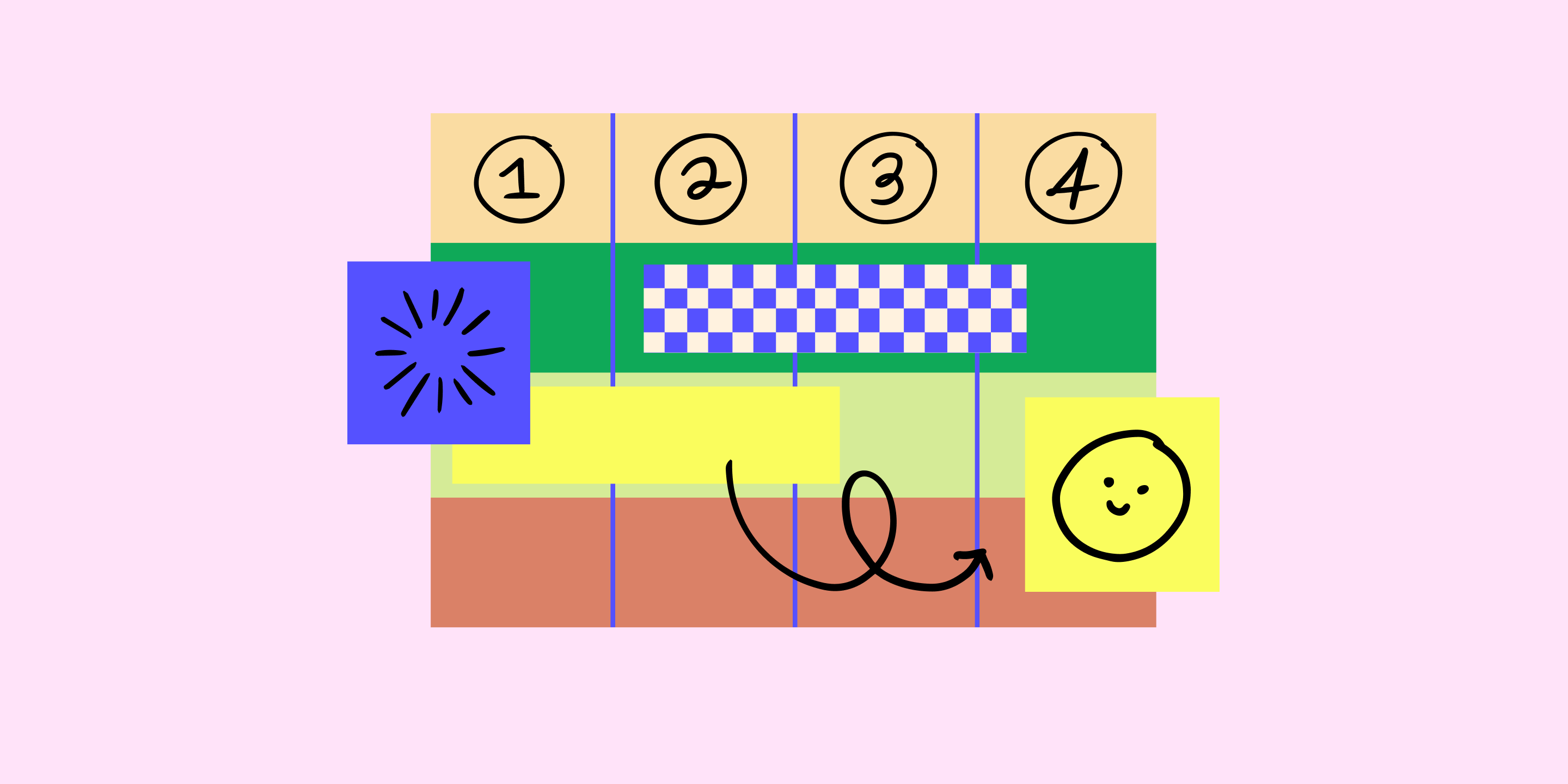
No matter what you’re working on, the key to customer satisfaction and business growth is understanding your users. A user journey map helps you uncover pain points, explore the touchpoints from their perspective, and learn how to improve your product.
Imagine you just launched a new ecommerce platform. Shoppers fill their carts with products, but they abandon their carts before checkout. With a user journey map, you can pinpoint where the customer experience is going wrong, and how to enable more successful checkouts.
Read on to find out:
- What is a user journey map, and how it captures user flows and customer touchpoints
- Benefits of user journey mapping to refine UX design and reach business goals
- How to make user journey maps in five steps, using FigJam’s user journey map template
What is a user journey map?
Think about the path a user takes to explore your product or website. How would you design the best way to get there? User journey maps (or user experience maps) help team members and stakeholders align on user needs throughout the design process, starting with user research. As you trace users' steps through your user flows, notice: Where do users get lost, backtrack, or drop off?
User journey maps help you flag pain points and churn, so your team can see where the user experience may be confusing or frustrating for your audience. Then you can use your map to identify key customer touchpoints and find opportunities for optimization.
How to read a user journey map
Most user journey maps are flowcharts or grids showing the user experience from end to end. Consider this real-life journey map example of a freelancing app from Figma's design community. The journey starts with a buyer persona needing freelance services, and a freelancer looking for a gig. Ideally, the journey ends with service delivery and payment—but customer pain points could interrupt the flow.
Start your user journey map with FigJam
5 key user journey map phases.
Take a look at another Figma community user journey template , which uses a simple grid. Columns capture the five key stages of the user journey: awareness, consideration, decision, purchase, and retention (see below). Rows show customer experiences across these stages—their thoughts, feelings, and pain points. These experiences are rated as good, neutral, and bad.
To see how this works, consider a practical example. Suppose a new pet parent wants to learn how to train their puppy and discovers your dog-training app. Here's how you might map out the five key user journey stages:
- Awareness. The user sees a puppy-training video on social media with a link to your product website. They're intrigued—a positive experience.
- Consideration. The user visits your product website to preview your app. If they can't find a video preview easily, this could be a neutral or negative experience.
- Decision. The user clicks on a link to the app store and reads reviews of your app and compares it to others. They might think your app reviews are good, but your price is high—a negative or neutral experience.
- Purchase. The user buys your app and completes the onboarding process. If this process is smooth, it's a positive experience. If not, the customer experience could turn negative at this point.
- Retention. The user receives follow-up emails featuring premium puppy-training services or special offers. Depending on their perception of these emails, the experience can range from good (helpful support) to bad (too much spam).
2 types of user journey maps—and when to use them
User journey maps are helpful across the product design and development process, especially at two crucial moments: during product development and for UX troubleshooting. These scenarios call for different user journey maps: current-state and future-state.
Current-state user journey maps
A current-state user journey map shows existing customer interactions with your product. It gives you a snapshot of what's happening, and pinpoints how to enhance the user experience.
Take the puppy training app, for example. A current-state customer journey map might reveal that users are abandoning their shopping carts before making in-app purchases. Look at it from your customers' point of view: Maybe they aren't convinced their credit cards will be secure or the shipping address workflow takes too long. These pain points show where you might tweak functionality to boost user experience and build customer loyalty.
Future-state user journey maps
A future-state user journey map is like a vision board : it shows the ideal customer journey, supported by exceptional customer experiences. Sketch out your best guesses about user behavior on an ideal journey, then put them to the test with usability testing. Once you've identified your north star, you can explore new product or site features that will optimize user experience.
How to make a user journey map in 5 steps
To start user journey mapping, follow this step-by-step guide.
Step 1: Define user personas and goals.
Gather user research and data like demographics, psychographics, and shopping behavior to create detailed customer personas representing your target audience. In your dog-training app example, one key demographic may be parents. What’s their goal? It isn't necessarily "hire a puppy trainer"—it could be "teach kids how to interact with a puppy."
Step 2: Identify customer touch points.
Locate the points along the user journey where the user encounters or interacts with your product. In the dog training app example, touchpoints might include social media videos, app website, app store category search (e.g., pets), app reviews, app store checkout, in-app onboarding, and app customer support.
Step 3: Visualize journey phases.
Create a visual representation of user journey phases across key touchpoints with user flow diagrams , flowcharts , or storyboards .
Step 4: Capture user actions and responses.
For each journey stage, capture the user story: at this juncture, what are they doing, thinking, and feeling ? This could be simple, such as: "Potential customer feels frustrated when the product image takes too long to load."
Step 5: Validate and iterate.
Finally, show your map to real users. Get honest feedback about what works and what doesn’t with user testing , website metrics , or surveys . To use the dog-training app example, you might ask users: Are they interested in subscribing to premium how-to video content by a professional dog trainer? Apply user feedback to refine your map and ensure it reflects customer needs.
Jumpstart your user journey map with FigJam
Lead your team's user journey mapping effort with FigJam, the online collaborative whiteboard for brainstorming, designing, and idea-sharing. Choose a user journey map template from Figma's design community as your guide. With Figma's drag-and-drop design features, you can quickly produce your own professional, presentation-ready user journey map.
Pro tip: Use a service blueprint template to capture behind-the-scenes processes that support the user journey, bridging the gap between user experience and service delivery.
Ready to improve UX with user journey mapping?
Skip navigation

World Leaders in Research-Based User Experience
Journey mapping 101.

December 9, 2018 2018-12-09
- Email article
- Share on LinkedIn
- Share on Twitter
Journey maps are a common UX tool. They come in all shapes, sizes, and formats. Depending on the context, they can be used in a variety of ways. This article covers the basics: what a journey map is (and is not), related terminology, common variations, and how we can use journey maps.
In This Article:
Definition of a journey map, key components of a journey map, journey-map variations, why use journey maps.
Definition: A journey map is a visualization of the process that a person goes through in order to accomplish a goal.
In its most basic form, journey mapping starts by compiling a series of user actions into a timeline. Next, the timeline is fleshed out with user thoughts and emotions in order to create a narrative. This narrative is condensed and polished, ultimately leading to a visualization.
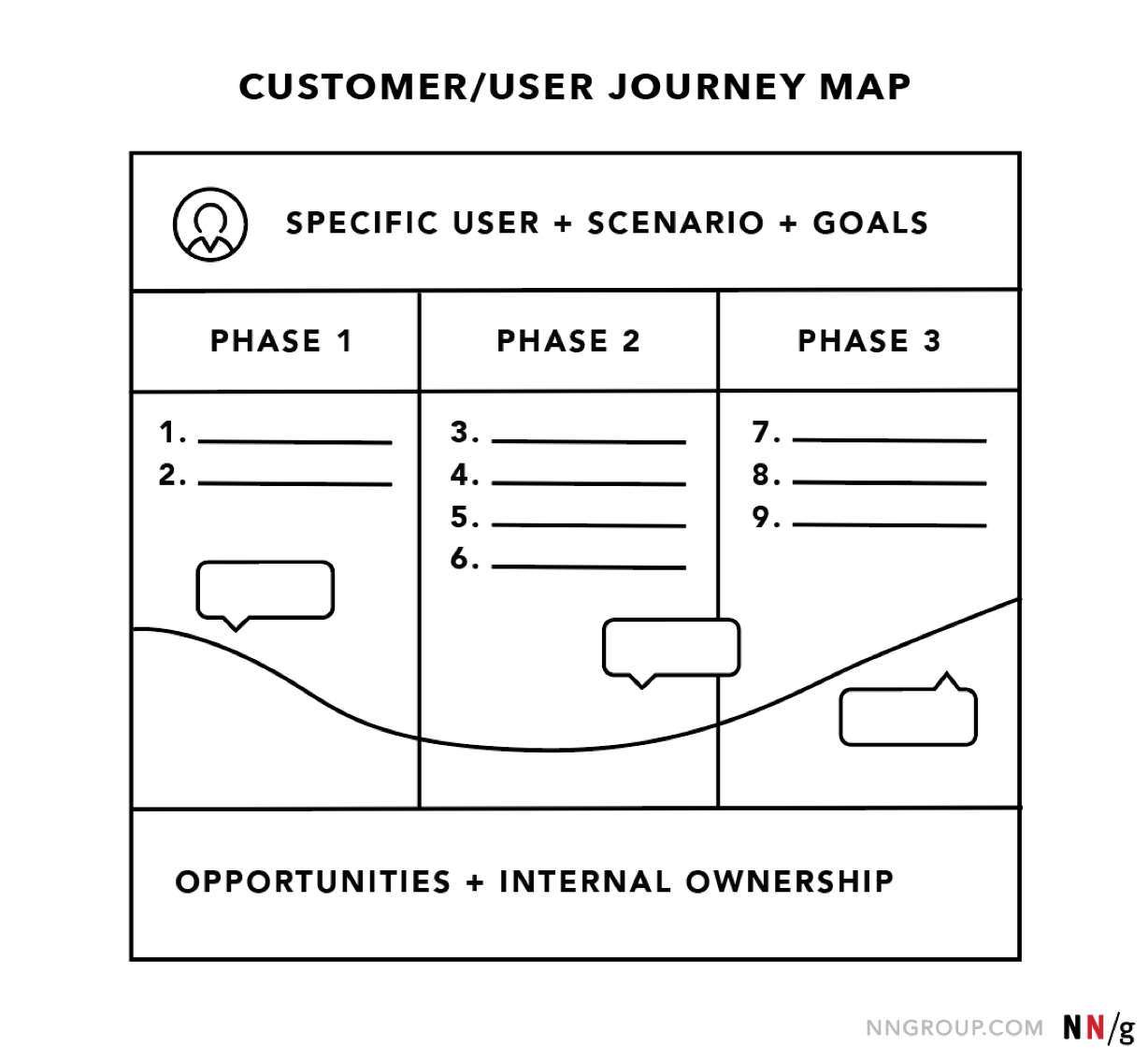
The terms ‘user journey map’ and ‘customer journey map’ can be used interchangeably. Both reference a visualization of a person using your product or service.
While the argument can be made that the term ‘customer’ does a disservice to the method (because, especially for certain business-to-business products, not all of end users are technically customers, i.e., product buyers), alignment on what you call the map is far less important than alignment on the content within the map.
Journey maps come in all shapes and sizes. Regardless of how they look, journey maps have the following 5 key elements in common:
Scenario + Expectations
Journey phases, actions, mindsets, and emotions, opportunities.
The actor is the persona or user who experiences the journey. The actor is who the journey map is about — a point of view. Actors usually align with personas and their actions in the map are rooted in data.
Provide one point of view per map in order to build a strong, clear narrative. For example, a university might choose either a student or a faculty member as actor — each would result in different journeys. (To capture both viewpoints, the university will need to build two separate maps, one for each of the two user types.)
The scenario describes the situation that the journey map addresses and is associated with an actor’s goal or need and specific expectations. For example, one scenario could be switching mobile plans to save money, and expectations for it include to easily find all the information needed to make a decision.
Scenarios can be real (for existing products and services) or anticipated — for products that are yet in the design stage.
Journey maps are best for scenarios that involve a sequence of events (such as shopping or taking a trip), describe a process (thus involve a set of transitions over time), or might involve multiple channels .
Journey phases are the different high-level stages in the journey. They provide organization for the rest of the information in the journey map (actions, thoughts, and emotions). The stages will vary from scenario to scenario; each organization will usually have data to help it determine what these phases are for a given scenario.
Here are some examples:
- For an ecommerce scenario (like buying Bluetooth speakers), the stages can be discover, try, buy, use, seek support.
- For big (or luxury) purchases (like buying a car), the stages can be engagement, education, research, evaluation, justification.
- For a business-to-business scenario (like rolling out an internal tool), the stages could be purchase, adoption, retention, expansion, advocacy.
These are behaviors, thoughts, and feelings the actor has throughout the journey and that are mapped within each of the journey phases.
Actions are the actual behaviors and steps taken by users. This component is not meant to be a granular step-by-step log of every discrete interaction. Rather, it is a narrative of the steps the actor takes during that phase.
Mindsets correspond to users’ thoughts, questions, motivations, and information needs at different stages in the journey. Ideally, these are customer verbatims from research.
Emotions are plotted as single line across the journey phases, literally signaling the emotional “ups” and “downs” of the experience. Think of this line as a contextual layer of emotion that tells us where the user is delighted versus frustrated.
Opportunities (along with additional context such as ownership and metrics) are insights gained from mapping; they speak to how the user experience can be optimized. Insights and opportunities help the team draw knowledge from the map:
- What needs to be done with this knowledge?
- Who owns what change?
- Where are the biggest opportunities?
- How are we going to measure improvements we implement?

There are several concepts closely related and thus easily confused with journey maps.
It is important to note that this section is only meant to help your personal understanding and clarification of these terms. It is not advised to debate or attempt to shift a whole organization’s language to abide by the definitions stated here. Instead, use these definitions to guide you towards aspects of another method that your team has not previously considered.
Journey Map vs. Experience Map
Think of an experience map as a parent to a journey map. A journey map has a specific actor (a singular customer or user of a product) and specific scenario (of a product or service), while an experience map is broader on both accounts — a generic human undergoing a general human experience.
The experience map is agnostic of a specific business or product. It’s used for understanding a general human behavior; in contrast, a customer journey map is specific and focused on a particular business or product.
For example, imagine the world before the ridesharing market existed (Uber, Lyft, Bird, or Limebike, to name a few). If we were to create an experience map of how a person gets from one place to another, the map would likely include walking, biking, driving, riding with a friend, public transportation, or calling a taxi. Using that experience map we could then isolate pain points: unknown fares, bad weather, unpredictable timing, paying in cash, and so on. Using these pain points, we would then create a future journey map for specific product: how does a particular type of user call a car using the Lyft app?
Journey Map vs. Service Blueprint
If journey maps are the children to experience maps, then service blueprints are the grandchildren. They visualize the relationships between different service components (such as people or processes) at various touchpoints in a specific customer journey.
Think of service blueprints as a part two to customer journey maps. They are extensions of journey maps, but instead of being focused on the user (and taking the user’s viewpoint), they are focused on the business (and take its perspective).
For the Lyft scenario above, we would take the journey map and expand it with what Lyft does internally to support that customer journey. The blueprint could include matching the user to a driver, contacting the driver, calculating fares, and so on.
Journey Map vs. User Story Map
User stories are used in Agile to plan features or functionalities. Each feature is condensed down to a deliberately brief description from a user’s point of view; the description focuses on what the user wants to do, and how that feature will help. The typical format of a user story is a single sentence: “As a [type of user], I want to [goal], so that [benefit].” For example, “As a checking account holder, I want to deposit checks with my mobile device, so that I don’t have to go to the bank.”
A user story map is a visual version of a user story. For example, take the user story above (“As a checking account holder, I want to deposit checks with my mobile device, so that I don’t have to go to the bank.”) and imagine writing out the different steps that the team plans for the user to take when using that functionality. These steps could be: logging in, beginning deposit, taking picture of check, and entering transaction details. For each step, we can document required features: enabling camera access, scanning check and auto filling numbers, and authorizing signature. In a user story map, these features are written on sticky notes, then arranged based on the product release that each functionality will be added to.
While, at a glance, a user story map may look like a journey map, journey maps are meant for discovery and understanding (think big picture), while user story maps are for planning and implementation (think little picture).
Although a journey map and user story map may contain some of the same pieces, they are used at different points of the process. For example, imagine our journey map for Lyft indicated that a pain point appeared when the user was in a large group. To address it, the team may introduce a multicar-call option. We could create a user story map to break this feature (multicar call) into smaller pieces, so a product-development team could plan release cycles and corresponding tasks.
The benefits of journey maps (and most other UX mappings ) are two-fold. First, the process of creating a map forces conversation and an aligned mental model for the whole team. Fragmented understanding is a widespread problem in organizations because success metrics are siloed; it is no one’s responsibility to look at the entire experience from the user’s standpoint. This shared vision is a critical goal of journey mapping, because, without it, agreement on how to improve customer experience would never take place.
Second, the shared artifact resulting from the mapping can be used to communicate an understanding of your user or service to all involved. Journey maps are effective mechanisms for conveying information in a way that is memorable, concise, and that creates a shared vision. The maps can also become the basis for decision making as the team moves forward.
Journey mapping is a process that provides a holistic view of the customer experience by uncovering moments of both frustration and delight throughout a series of interactions. Done successfully, it reveals opportunities to address customers’ pain points, alleviate fragmentation, and, ultimately, create a better experience for your users.
Additional articles are available, discussing:
- When to create customer journey maps
- The 5-step process
- Journey mapping in real life
Free Downloads
Related courses, journey mapping to understand customer needs.
Capture and communicate UX insights across complex interactions
Omnichannel Journeys and Customer Experience
Create a usable and cohesive cross-channel experience by following guidelines to resolve common user pain points in a multi-channel landscape
Interaction
Generating Big Ideas with Design Thinking
Unearthing user pain points to drive breakthrough design concepts
Related Topics
- Customer Journeys Customer Journeys
- Design Process
Learn More:
Please accept marketing cookies to view the embedded video. https://www.youtube.com/watch?v=2W13ext26kQ
Customer Journey Mapping 101

The 3 Competencies of Journey Management
Kim Salazar · 5 min

Journey Mapping: 2 Decisions to Make Before You Begin
Kate Kaplan · 3 min

Scenario Mapping for Design Exploration
Kim Salazar · 3 min
Related Articles:
The 5 Steps of Successful Customer Journey Mapping
Kate Kaplan · 6 min
Parking Lots in UX Meetings and Workshops
Sarah Gibbons · 5 min
When and How to Create Customer Journey Maps
User Experience vs. Customer Experience: What’s The Difference?
Journey Mapping: 9 Frequently Asked Questions
Alita Joyce and Kate Kaplan · 7 min
Luxury Shopping User Groups and Journeys
Kate Moran · 14 min
A Complete Guide to User Story Mapping
Blog Author
- December 28, 2023

User Story Mapping is a powerful technique that has revolutionized the way teams plan and execute projects. Originally introduced by Jeff Patton, this method provides a visual representation of a product’s features from the user’s perspective, fostering collaboration and enhancing the overall development process. In this comprehensive guide, we’ll delve into the intricacies of User Story Mapping, exploring its principles, benefits, and practical applications. Brace yourself for a journey through the user-generated content that will empower you to master this essential project management tool.
Understanding User Story Mapping:

At its core, User Story Mapping is a collaborative exercise that enables teams to visualize and prioritize user stories – short, simple descriptions of a feature told from the perspective of the person who desires the new capability. The process begins with identifying user activities and creating a user journey, mapping out the steps a user takes to achieve their goals. This visual representation allows teams to gain a holistic view of the entire user experience.
The Anatomy of User Story Mapping:
- Identifying User Personas:
Before embarking on User Story Mapping, it’s crucial to understand your user base. Identify different user personas – fictional characters representing the various user types who will interact with your product. This step lays the foundation for tailoring the user journey to meet the specific needs and expectations of each persona.
- Defining User Activities:
Once personas are established, break down the user’s interaction with the product into activities. What steps do they take to accomplish their goals? These activities serve as the building blocks for user stories and provide clarity on the user’s journey.
- Creating User Stories:
With user activities outlined, the next step is to create user stories. Craft concise and focused narratives that describe the desired functionality from the user’s perspective. These stories serve as a bridge between the user’s needs and the development team’s implementation.
- Prioritizing and Sequencing:
User Story Mapping isn’t just about creating a visual representation; it’s also about setting priorities. Determine which features are essential for the minimum viable product (MVP) and sequence them logically to ensure a smooth user experience. This step helps teams make informed decisions about what to build first.
Benefits of User Story Mapping:

- Enhanced Collaboration:
User Story Mapping fosters collaboration among cross-functional teams . By bringing together designers, developers, and product owners , it creates a shared understanding of the project’s goals and user needs. This collaborative environment encourages open communication and ensures that everyone is on the same page throughout the development process.
- Clearer Project Vision:
The visual representation provided by User Story Mapping offers a clear and concise overview of the entire project. This helps stakeholders, including non-technical team members and clients, grasp the project’s scope and progress easily. A shared project vision reduces misunderstandings and facilitates more informed decision-making.
- Adaptability and Iteration:
One of the strengths of User Story Mapping is its adaptability. As the project progresses, teams can iterate and refine the user stories and map, responding to changing requirements or insights gained during development. This flexibility ensures that the product remains aligned with user needs and evolving market conditions.
Practical Applications of User Story Mapping:
- Agile Development:
User Story Mapping aligns seamlessly with Agile development methodologies . The iterative and collaborative nature of User Story Mapping complements Agile principles , allowing teams to respond quickly to changing requirements and deliver incremental value to users.
- Product Roadmapping:
User Story Mapping is a valuable tool for creating product roadmaps. By visualizing the user journey and prioritizing features, teams can develop a roadmap that outlines the product’s evolution over time. This roadmap serves as a strategic guide, helping teams set priorities and communicate the product’s direction to stakeholders.
- User-Centered Design:
Incorporating User Story Mapping into the design process ensures a user-centered approach. By keeping the focus on the user’s perspective, teams can create products that not only meet technical specifications but also provide a positive and intuitive user experience.
Conclusion:
In conclusion, User Story Mapping is more than just a project management tool – it’s a collaborative and user-centric approach to product development. By harnessing the power of user-generated content, teams can create a shared vision, prioritize effectively, and deliver products that truly meet user needs. As you embark on your User Story Mapping journey, remember that its success lies in the ongoing collaboration and adaptability it encourages.
If you found the information valuable and insightful, we kindly encourage you to share it with your friends and colleagues. Don’t forget to explore our other blogs , where you’ll find a plethora of Scrum tips and tricks to further enhance your project management expertise. Stay connected with us on Facebook and LinkedIn to stay up-to-date with the latest news and updates in the Agile world. Together, let’s embrace continuous improvement and achieve remarkable success in our project endeavours!
Key Takeaways
- Embrace the collaborative nature of User Story Mapping. Engage cross-functional teams, stakeholders, and end-users to ensure a shared understanding and commitment to the project goals.
- Use User Story Mapping to prioritize features based on user value. Focus on delivering a minimum viable product that addresses core user needs before expanding the product's capabilities.
- User Story Mapping is not a one-time exercise. Embrace iteration and adaptability throughout the development process. Regularly revisit and refine the user stories and map to ensure they align with evolving project requirements and user feedback.
Trending Blogs
How to prepare for a scrum master interview in 2023, 7 steps to recession-proof your career, top scrum case study examples in real-life 2023, understanding the three “c”s of agile user stories, 7 great perks of being a project manager, request more information, recent blogs.

Agile Leadership: Empowering Teams for Innovation and Success
In the fast-paced world of business and technology, Agile leadership has emerged as a guiding

Agile Metrics That Matter: Measuring Success in Your Development Process
In the ever-evolving landscape of software development, the Agile methodology has become a cornerstone for

Agile vs. Waterfall: Choosing the Right Project Management Approach
Welcome to the dynamic world of project management, where the choice between Agile and Waterfall
Recent Videos

Top 15 traits of successful Agile Teams

How To Pass the Professional Scrum Master Exam

7 Questions to Ask Yourself If Youre Thinking of Becoming a Scrum Master
Skillier is a global ed-tech company helping professionals upskill, while making a difference and creating a positive impact in the world.
Get In Touch
- [email protected]
- Buy now Pay Later
- Agile and Scrum Practice Tests
- In-Demand Courses
- Our Mission
- Mission Partners
- Terms and Conditions
- Privacy Policy
- Cancellation and Transfer
- Cookie Policy
Trending Courses
Certified ScrumMaster (CSM) | Advanced Certified ScrumMaster (A-CSM) | Certified Scrum Product Owner (CSPO) | Advanced Certified Scrum Product Owner (A-CSPO ) | Leading SAFe ® – Certified SAFe ® Agilist | SAFe Product Owner/Product Manager (POPM) | PRINCE2® 6th Edition Foundation & Practitioner | Enterprise Transformation – Practitioner (ICP-ENT) | Enterprise Agility – Coaching Agile Transitions (ICP-CAT) | Certified Professional Agile Coaching (ICP-ACC)
2024 © Skillier All Rights Reserved
🥳 get an extra £25 off today by signing up for our emails 🎉.
A Beginner’s Guide To User Journey Mapping
To design a great product, you need to understand what the user does with it. A user journey map will help you to answer that question for the product’s entire lifecycle.
“How do people actually use this product?” is a fundamental question that every product creator must answer. In order to do so, product designers need to understand the essence of the whole product experience from the user’s perspective. Fortunately, user journey mapping is an excellent exercise that can shed light on the ways in which the users interact with the product.
What Is a User Journey Map?
More From Nick Babich What Is Microcopy?
What Design Problems Does a User Journey Map Solve?
A user journey map is an excellent tool for UX designers because i t visualizes how a user interacts with a product and allows designers to see a product from a user’s point of view. This fosters a more user-centric approach to product design, which ultimately leads to a better user experience.
User journey maps help a product team to find the answer to the “What if?” questions. Also, a user journey map can be helpful when a company tracks quantitative key performance indicators . In this case, a user journey map can become a cornerstone for strategic recommendations.
The 8-Step Process of User Journey Mapping
Before creating a user journey map, review the goals of your business or service. This knowledge will help you align the business and user goals.
- Choose a scope.
- Create a user persona.
- Define the scenario and user expectations.
- Create a list of touchpoints.
- Take user intention into account.
- Sketch the journey.
- Consider a user’s emotional state during each step of the interaction.
- Validate and refine the user journey.
1. Choose a Scope
The scope of the user journey map can vary from a high-level map that shows end-to-end experience (e.g., creating a smart home in your house) to a more detailed map that focuses on one particular interaction (for instance, adding a new device to your smart home ecosystem).
2. Create a User Persona
Who is your user?
A user journey map is always focused on the experience of one main actor — a user persona who experiences the journey.
A user persona should always be based on information that you have about your target audience. That’s why you should always start with user research . Having solid information about your users will prevent you from making false assumptions.
Gather and analyze all available information about your target audience:
- Interview your real or potential users.
- Conduct contextual inquiry. This is an ethnographic field study that involves in-depth observation of people interacting with your product.
- Conduct and analyze the results of user surveys.
3. Define the Scenario and User Expectations
The scenario describes the situation that the journey map addresses. It can be real or anticipated. It’s also important to define what expectations a user persona has about the interaction. For example, a scenario could be ordering a taxi using a mobile app with the expectation of getting the car in five minutes or less.
4. Create a List of Touchpoints
Touchpoints are user actions and interactions with the product or business. You need to identify all the main touchpoints and all channels associated with each touchpoint. For example, for the touchpoint “Buy a gift,” the associated channels could be purchasing online or buying in the store.
5. Take User Intention Into Account
What motivates your user to interact with your product? Similarly, w hat problem are users looking to solve when they decide to use your product? Different user segments will have different reasons for adopting it.
Let’s take an e-commerce website. There is a big difference between a user who is just looking around and one who wants to accomplish a specific task like purchasing a particular product.
For each user journey, you need to understand:
- Motivation. Why are the users trying to do this action?
- Channels. Where the interaction takes place.
- Actions . The actual behaviors and steps the users take.
- Pain points . What are the challenges users are facing?
Also, ensure that the user is getting a consistent experience across all channels.
6. Sketch the Journey
Put together all the information you have and sketch a journey in the format of a step-by-step interaction. Each step demonstrates an experience that the persona has with a service/product or another person.
You can use a tool called a storyboard, which is a graphic representation of how a user does something, step by step. It can help you show how users can interact with a product. Using storyboards, you can visually depict what happens during each step.
7. Consider a User’s Emotional State During Each Step of the Interaction
What does a user feel when interacting with your product?
The products we design need to mirror the states of mind of our users. When we consider a user’s emotional state, this knowledge will help us to connect with them on a human level. That’s why it’s important to add an emotional lane to the user journey map. By visualizing the emotional ups and downs of the experience, you’ll find the areas that require refinement.
You can create an empathy map to better understand how the user feels. Try to mitigate the emotional downs and reinforce emotional ups with good design.
8. Validate and Refine the User Journey
Journey maps should result in truthful narratives, not fairy tales. Even when a user journey is based on research, you must validate it. Use the information from usability testing sessions and app analytics to be sure that your journey resembles a real use case.
Gather and analyze information about your users on a regular basis. For example, user feedback can be used to improve your understanding of the user journey.
More in Design + UX Hey Designers, Stop Using Users
Map the User Journey
Remember that the goal of making a user journey map is to create a shared vision within your product team and stakeholders. That’s why, once you create a user journey map, you should share it with your peers. Make it possible for everyone in your team to look at the entire experience from the user’s standpoint and draw on this information while crafting a product.
Recent Expert Contributors Articles

- Twitter icon
- Facebook icon
- LinkedIn icon
A Guide to User Story Mapping: Templates and Examples (How to Map User Stories)
🎁 Bonus Material: Free Template & Cards

What is a Workflow? How to Create a Winning Workflow for Your Process

How to Navigate Different Communication Styles Across Multiple Teams
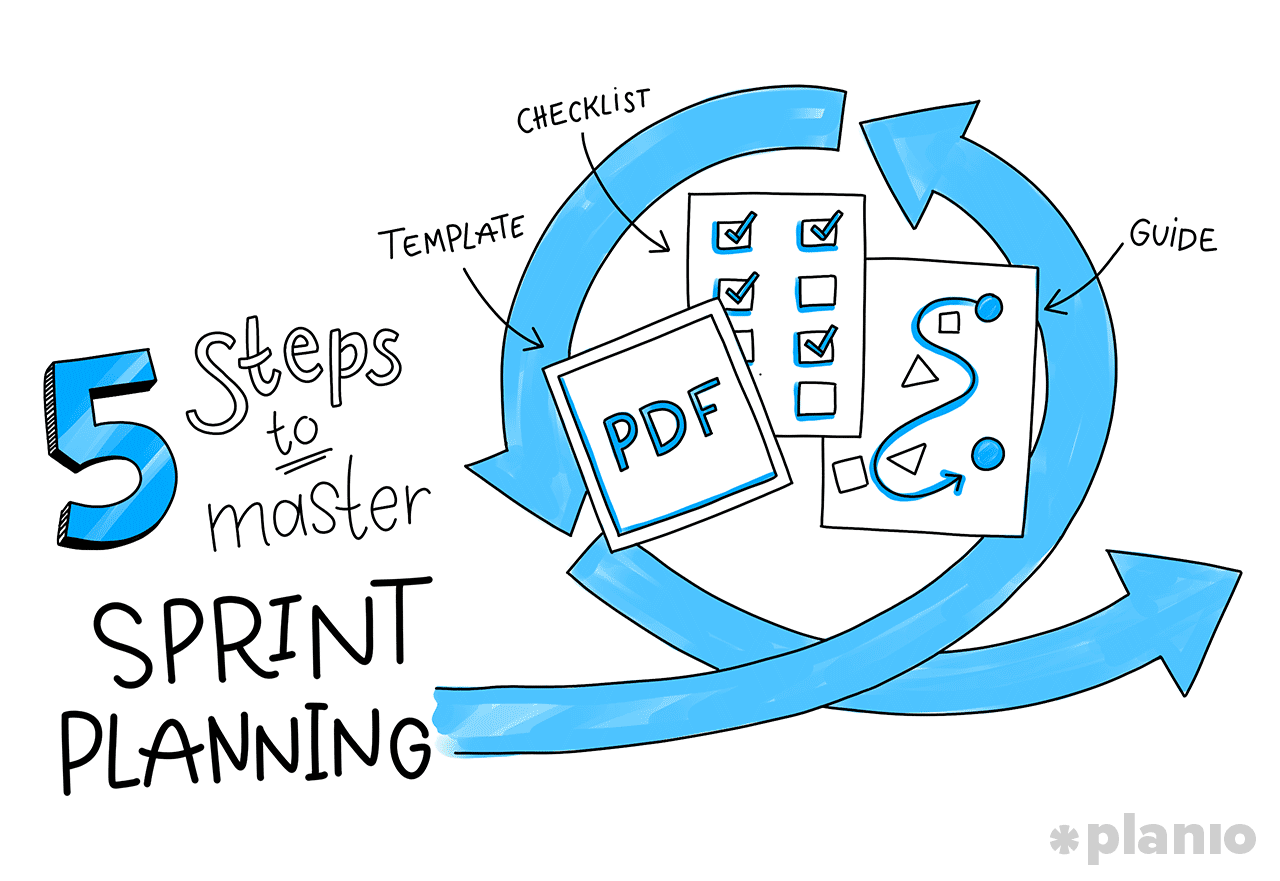
5 Steps to Master Sprint Planning: Template, Checklist and Guide
Working with planio, see how our customers use planio.
Ask a question
Start a discussion.
- Jira Jira Software
- Jira Service Desk Jira Service Management
- Jira Work Management
- Confluence Confluence
- Trello Trello
Community resources
- Announcements
- Technical support
- Documentation
Atlassian Community Events
- Atlassian University
- groups-icon Welcome Center
- groups-icon Featured Groups
- groups-icon Product Groups
- groups-icon Regional Groups
- groups-icon Industry Groups
- groups-icon Community Groups
- Learning Paths
- Certifications
- Courses by Product
- Live learning
- Local meet ups
- Community led conferences

Get product advice from experts

Join a community group

Advance your career with learning paths

Earn badges and rewards

Connect and share ideas at events
- Featured Groups
Anatomy of an Agile User Story Map

Recommended Learning For You
Level up your skills with Atlassian learning
Jira Align Program Essentials
Learn how to use Jira Align at the program level and how to plan for and manage your Program Increment (PI).
Managing Agile Boards and Reports
Learn how to pick the right board type for your team and customize it to fit your specific requirements.
Atlassian Certified Associate
Jira Software Board Configuration
Earn an associate-level credential from Atlassian that shows you can effectively configure Jira Software boards.
Was this helpful?
About this author
Head of Product
Wollongong, NSW 2500
6 accepted answers
111 total posts
- +19 more...
- addon-com.kretar.jira.plugin.user-story-map
- product-management
- Community Guidelines
- Privacy policy
- Notice at Collection
- Terms of use
- © 2024 Atlassian
- Professional Scrum Product Owner (PSPO)
- SAFe for Government
- Professional Scrum Master (PSM)
- Certified ScrumMaster
- PMI-ACP Exam Prep
- Leading SAFe® 6.0 Certification
- SAFe Scrum Master
- Certified Scrum Product Owner (CSPO)
- SAFe for Teams
- Agile Scrum Foundation
- AgilePM Foundation and Practitioner Certification
- Agile Scrum Master (ASM)
- Kanban Training
- Scrum Fundamentals
- PMP Certification
- Project Management Fundamentals
- CAPM Exam Prep
- Change Management Foundation and Practitioner Certification
- PRINCE2 Foundation & Practitioner Certification (7th Edition)
- PRINCE2 Agile Foundation & Practitioner Certification
- Business Analysis Foundation and Practitioner Certification
- Microsoft Project Training
- JIRA Certification Training
- Lean Project Management
- ITIL 4 Foundation
- VeriSM™ Foundation
- SIAM Foundation
- SIAM Professional
- 7 QC Tools Training
- Minitab Essentials
- Lean Six Sigma Yellow Belt
- Six Sigma Awareness
- Lean Six Sigma Green Belt
- Design for Six Sigma
- Lean Six Sigma Black Belt
- Lean Fundamentals
- Value Stream Mapping
- Quality by Design
- Quality Function Deployment
- BPM and Six Sigma
- RCA through Six Sigma
- DevOps Foundation
- DevOps Master
- DevOps Professional
- Continuous Delivery Architecture
- COBIT 5 Certification
- Corporate Group Training
- 1-to-1 Training
- Join as a Trainer

- Top Agile Blog Posts
What is User Story Mapping? Benefits and Examples
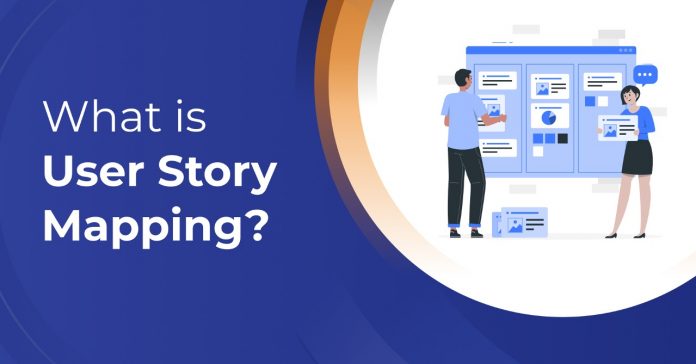
Creating a product that truly resonates with users is more crucial than ever. This is where User Story Mapping steps in as a game-changer. It’s a technique that transforms the way teams approach product planning by focusing on the user’s journey.
This blog introduces you to the essentials of User Story Mapping. This technique helps you understand your users better and organizes and prioritizes the development of product features in a way that makes sense to the end user.
Table of Contents
What is User Story Mapping?
Benefits of user story mapping, who should use user story mapping, user story mapping example, when and how to create a user story map.
- Challenges in Using User Story Mapping?

User Story Mapping vs Customer Journey Mapping
- What’s Next After Completing User Story Mapping
User Story Mapping is a collaborative approach in agile software development that involves visualizing a product or system’s features from the user’s perspective. Spearheaded by Jeff Patton , this technique employs user stories , a backlog , and a user map.
The user map is a horizontal depiction of the user’s journey through the system, arranged chronologically, with vertical slices representing different layers or components of the system.
By identifying and prioritizing user activities, breaking them into actionable user stories, and arranging them in a timeline, teams can enhance communication , prioritize features, and visualize the overall project.
This method not only fosters a shared understanding among team members but also aids in prioritization, helping teams plan releases or iterations based on user needs and business value. Ultimately, User Story Mapping is a powerful tool for creating a roadmap that aligns development efforts with user requirements and business objectives.
User Story Mapping, a powerful, agile development technique, exceeds basic feature planning. Teams leverage visual representations to enhance collaboration, communication, and strategic project planning . Explore the insights into how this approach elevates project planning, prioritization, and the overall user experience.
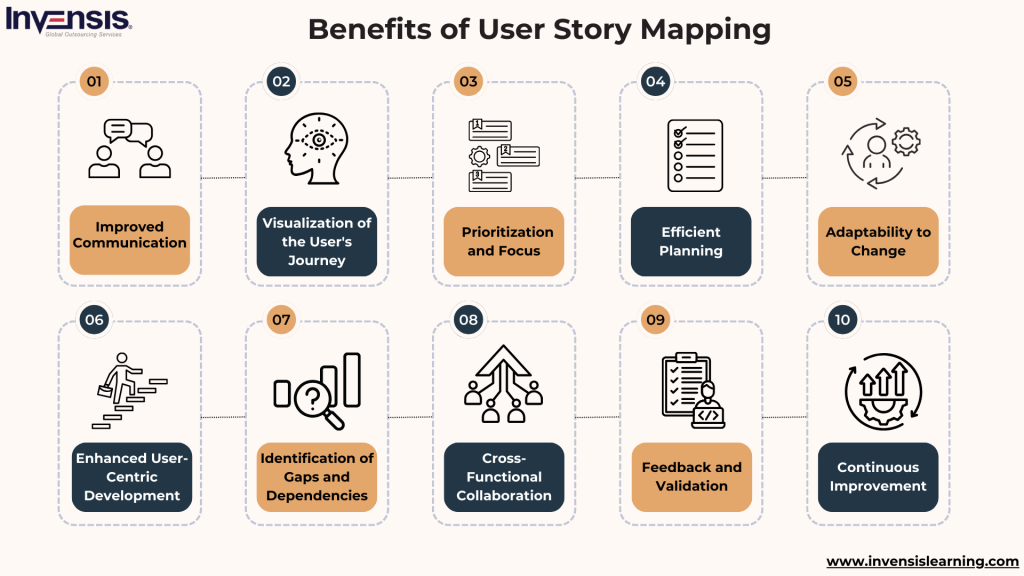
Improved Communication
User Story Mapping significantly enhances communication within agile teams and between stakeholders. Team members develop a shared understanding of project goals, priorities, and user expectations by providing a visual representation of the user’s journey and the associated features.
This shared understanding fosters more effective communication , reducing the risk of misunderstandings and ensuring everyone is aligned with the overarching vision for the product.
Visualization of the User’s Journey
The technique creates a compelling visual map that illustrates the user’s experience with the product over time. This visualization allows development teams to see the entire scope of the project , understand the sequence of user interactions, and grasp the flow of functionality. This holistic view helps make informed decisions about feature development, ensuring the team considers the product’s overall user experience.
Prioritization and Focus
It facilitates effective prioritization of user stories based on user needs, business value, and dependencies. This prioritization ensures the team focuses on delivering the most crucial features first, promoting incremental and iterative development practices. By addressing high-priority items early in the development process, teams can deliver value to users sooner.
Efficient Planning
The technique aids in planning releases and iterations by grouping related user stories in a logical sequence. This organized approach streamlines the planning process, enabling teams to allocate resources efficiently and meet project timelines . It also assists in setting realistic expectations for stakeholders regarding the delivery timeline of specific features.
Adaptability to Change
User Story Mapping provides a flexible framework that supports adaptability to changing requirements. The visual map is dynamic and easily adjusted so that teams can respond to evolving priorities, market conditions, or user feedback. This adaptability is crucial in an agile environment where changes are expected and welcomed throughout development.
Enhanced User-Centric Development
By keeping the development team focused on user needs and experiences, User Story Mapping promotes a user-centric approach to design and development. It encourages teams to continuously consider how each feature contributes to overall user satisfaction and aligns with the user’s journey through the product.
Identification of Gaps and Dependencies
The visual representation of user stories exposes gaps in functionality and highlights dependencies between different features. This insight is invaluable for project planning as it allows teams to strategically address dependencies and ensure that all necessary components are considered and developed correctly.
Cross-Functional Collaboration
It encourages collaboration among cross-functional teams, including developers, designers, product managers, and other stakeholders. This collaborative environment ensures that diverse perspectives are considered during the planning and development, leading to more comprehensive and well-rounded solutions.
Feedback and Validation
The visual map is a focal point for stakeholder discussions and feedback sessions. This engagement facilitates the validation of assumptions, requirements, and priorities. Regular feedback loops ensure the development team stays aligned with business goals and user expectations throughout the project.
- Continuous Improvement
User Story Mapping fosters a culture of continuous improvement by providing opportunities for reflection on past iterations. Teams can analyze the success and challenges of previous releases, identify areas for improvement, and implement adjustments in subsequent iterations, contributing to the overall refinement of the development process.
User Story Mapping is a valuable technique for various stakeholders involved in the product development process. The key individuals and roles that should use User Story Mapping include.
Product Owners
Responsible for defining and prioritizing features, product owners use User Story Mapping to align development efforts with user needs and business goals.
Development Teams
Developers, designers, and other development team members benefit from User Story Mapping to understand the user’s journey, prioritize tasks, and plan sprints effectively.
Scrum Masters
Scrum Masters can use User Story Mapping to facilitate collaborative sessions, promote communication among team members, and ensure alignment with agile principles.
Stakeholders
Business stakeholders , including executives and managers, can use User Story Mapping to gain a visual understanding of the project, make informed decisions, and align the development process with organizational objectives.
Designers can utilize User Story Mapping to visualize user flows, identify key touchpoints, and ensure that the product’s design aligns with the overall user experience.
QA / Testers
Quality assurance professionals can benefit from User Story Mapping to understand the context of features, identify critical paths, and plan testing efforts accordingly.
Marketing Teams
Marketing teams can use User Story Mapping to gain insights into the planned features, understand the product’s value proposition, and align their strategies with the development roadmap.
Customer Support
Customer support teams can utilize User Story Mapping to anticipate upcoming features, understand user workflows, and prepare for potential user inquiries or challenges.
Agile Coaches
Agile coaches can guide teams in using User Story Mapping effectively, ensuring that it aligns with agile principles and facilitates collaborative, user-centric development.
Explore the user journey with two key epics – “User Onboarding” focuses on introducing newcomers to the platform, while “Social Interaction” emphasizes functionalities for connecting and engaging with others.
Dive into the associated user stories to uncover how these epics shape the user experience on the social networking platform.
Epic: User Onboarding
Description: The overarching process of introducing new users to the social networking platform.
User Stories
- As a new user, I want to explore the platform’s privacy settings before creating my profile to control who can see my information
- As a new user, I want to view a tutorial on the platform’s key features during onboarding to understand how to navigate and use the service
- As a new user, I want to set up my profile by adding a profile picture and basic information to personalize my presence on the platform
- As a new user, I want the option to connect my account with other social media profiles to import information and contacts easily
Epic: Social Interaction
Description: The primary functionality for users to connect and interact with others on the social networking platform.
- As a user, I want to send friend requests to connect with other users on the platform
- As a user, I want to post status updates and share media content with my network
- As a user, I want to comment on and like posts from other users to engage in conversations
- As a user, I want to receive notifications for friend requests and comments, and I would like to stay updated on my network’s activity
Creating a User Story Map is typically done at the early stages of a project or during the planning phase of an agile development cycle. Here’s a step-by-step guide on when and how to create a User Story Map.
When to Create a User Story Map?
Explore the strategic timing of User Story Map creation in our guide. Learn when this agile visualization tool becomes a pivotal asset in your project planning journey.
Project Kickoff
Begin creating a User Story Map at the project kickoff or when a new product or feature is being considered. It helps set the direction, align team members, and establish a shared understanding of the project goals.
Product Discovery Phase
During the product discovery phase, use User Story Mapping to explore and define the user’s journey, identify key activities, and prioritize features based on user needs and business value.
Release Planning
Use User Story Mapping as part of release planning to organize and prioritize user stories for upcoming releases or iterations. This helps in creating a roadmap for development.
Team Collaboration Sessions
Schedule collaborative sessions with cross-functional team members, including developers, designers, product owners, and stakeholders. These sessions are crucial for gathering diverse perspectives and ensuring everyone is on the same page regarding the product vision.
How to Create a User Story Map?
Generating a User Story Map is a key step, usually undertaken in the initial phases of a project or during agile development planning. Delve into a comprehensive guide offering a systematic walkthrough on when and how to craft an effective User Story Map.
Identify User Personas
Begin by identifying the different user personas who will interact with the product. Understand their goals, challenges, and the tasks they need to accomplish.
List User Activities
Identify and list the key activities that each user persona will perform within the product. These activities represent the high-level steps in the user’s journey.
Generate User Stories
Break down each user activity into detailed user stories. User stories should be concise, focused on a single functionality, and written from the end-user’s perspective.
Arrange User Stories Horizontally
Arrange the user stories horizontally on a timeline, representing the chronological order of user interactions. This creates a visual representation of the user’s journey through the system.
Create Vertical Slices
Introduce vertical slices or columns that represent the different layers or components of the system. Each column groups related user stories based on their functionality.
Prioritize User Stories
Prioritize user stories within each column based on their importance, business value , or dependencies. This helps in planning releases and iterations.
Iterate and Refine
User Story Mapping is an iterative process. Regularly review and refine the map as the project progresses and new insights emerge. Adapt the map to changes in priorities or requirements.
Use Collaboration Tools
Consider using collaboration tools or physical boards to create and share the User Story Map with the team. Digital tools can enhance collaboration, especially if team members are distributed.
Facilitate Feedback Sessions
Organize feedback sessions with stakeholders to validate the User Story Map. This ensures everyone is aligned with the planned development path and allows feedback-based adjustments.
Challenges in Using User Story Mapping
Here are five important challenges associated with User Story Mapping, along with brief explanations and potential solutions
Overcomplication
- Challenge: Creating an overly detailed or complex user story map can lead to confusion, making it challenging for teams to focus on essential aspects of the user’s journey.
- Solution: Maintain simplicity by focusing on key user activities and breaking them into concise, actionable user stories. Regularly review and refine the map to ensure it remains clear and accessible.
Scope Creep
- Challenge: The flexibility of User Story Mapping may result in scope creep, where the project’s scope expands beyond the original plan, impacting timelines and resource allocation.
- Solution: Clearly define the scope during the mapping exercise. Establish strict criteria for adding new features and regularly reassess and reprioritize user stories to avoid unnecessary additions.
Difficulty in Prioritization
- Challenge: While User Story Mapping helps identify and organize user stories, prioritizing them can be challenging, especially when faced with competing priorities or dependencies.
- Solution: Involve key stakeholders in the prioritization process. Use techniques like MoSCoW (Must-haves, Should-haves, Could-haves, Won’t-haves) to categorize and prioritize user stories based on their importance.
Alignment Issues
- Challenge: Achieving and maintaining alignment among team members and stakeholders can be challenging, particularly when differing perspectives on user needs and priorities exist.
- Solution: Facilitate regular communication and collaboration sessions. Involve all relevant stakeholders in the mapping process to ensure a shared understanding of goals and priorities.
Dependency Management
- Challenge: Identifying and managing dependencies between user stories can be complex, and unforeseen dependencies may arise during development, requiring adjustments to the user story map.
- Solution: Document and visualize dependencies on the user story map. Regularly review and update the map as dependencies change. Maintain open communication channels to address dependencies promptly.
User Story Mapping and Customer Journey Mapping are both techniques used in product development, but they serve different purposes and focus on different aspects of the user experience.
Here’s a comparison between the two:
What’s Next After Completing User Story Mapping?
After completing a user story mapping exercise, the next steps involve translating the insights gained into actionable plans, aligning teams, and ensuring continuous improvement throughout development.
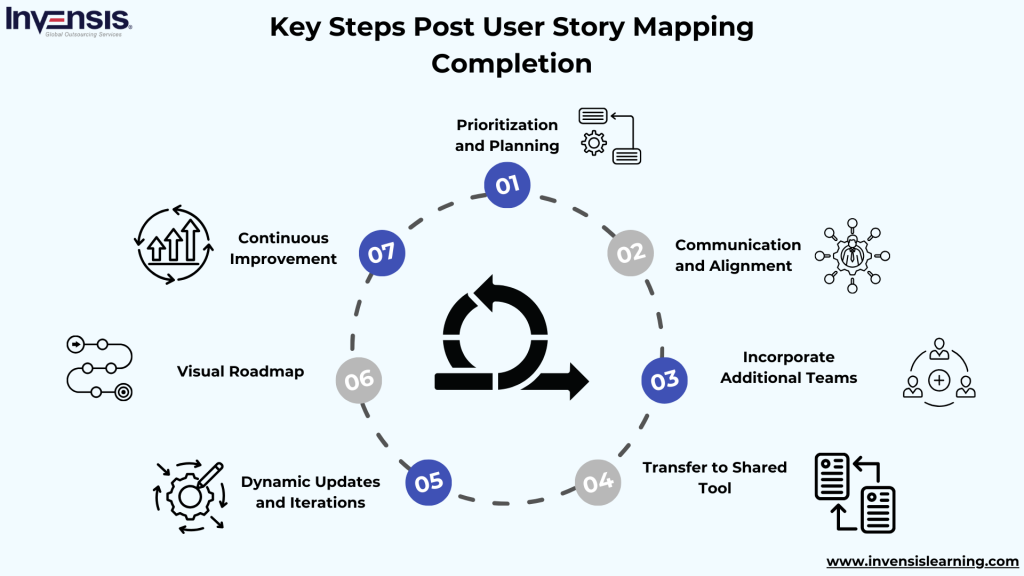
- Prioritization and Planning
Schedule Sprints and Releases Use the prioritized user stories to plan and schedule work into sprints and releases. This step involves breaking the user stories into manageable tasks and assigning them to specific development cycles.
- Communication and Alignment
Share with Teams and Leadership Communicate the user story map, priorities, and the product roadmap with all relevant teams. Ensure that there is alignment among all stakeholders, including those who did not participate in the mapping exercise.
- Incorporate Additional Teams
Engage Missing Teams If teams contribute to upcoming sprints or releases that were not part of the mapping exercise, ensure they are included in the process. Incorporate their work into the overall plan.
- Transfer to Shared Tool
Document in a Shared Tool Transfer the user story mapping artifacts into a shared tool the entire team can access. This includes adding technical specifications and acceptance criteria to ensure a comprehensive understanding of the work.
- Dynamic Updates and Iterations
Update with Findings A user story map need not be static. Regularly update it with findings from research spikes, revised estimations, and user feedback gathered during sprints and releases.
- Visual Roadmap
Utilize as a Visual Roadmap Leverage the user story map as a visual roadmap. This tool should serve as a dynamic guide, communicating planned work and the remaining tasks to the team.
Learning and Improvement View each user story mapping exercise as an opportunity to get closer to customers and increase empathy. Use the insights gained to drive an incremental, iterative approach to product development, learning, and improving with each cycle.
User Story Mapping emerges as a collaborative approach in agile software development , providing teams with a visual roadmap that aligns product features with the user’s journey.
By breaking down user activities into actionable stories and organizing them, teams gain a shared understanding of project goals and user expectations. The benefits are manifold, fostering improved communication, efficient prioritization, and adaptability to changing requirements.
When executed effectively, this technique enhances cross-functional collaboration, aligning development efforts with user needs and business objectives. Beyond the mapping exercise, the key lies in translating insights into prioritized plans, sharing them with teams and leadership, and continuously updating the map to reflect evolving priorities and findings from development cycles.
User Story Mapping is not just a planning tool but a catalyst for a user-centric, iterative development process, promoting continuous improvement and delivering value in increments.
Embark on a transformative Agile certification journey with Invensis! Master Agile techniques, prioritize tasks and boost teamwork through Agile Story Mapping. Join us for essential skills in agile project management and elevate your understanding of Agile Story Mapping.
AgilePM Foundation Certification Training
Certified Agile Leadership Certification Training
Agile Scrum Master Certification Training
SAFe Scrum Master Certification Training
RELATED ARTICLES MORE FROM AUTHOR

Agile Release Planning: Key Steps to Create an Effective Plan

What is a Burndown Chart? How to Use it in Agile

How to Conduct Agile Performance Testing?
Leave a reply.
Save my name, email, and website in this browser for the next time I comment.
- 14,522 Likes
- 444 Followers
- 95,600 Subscribers
- 2,170 Followers
Related Articles

Top 10 Scrum Tools in 2024

Top 8 Agile Games for Boosting Team Performance

Ways Organizational Work Culture Impacts Project Success

What is Sprint Planning Meeting? Definition, Advantages, and Disadvantages

What Are the Reasons Behind Agile Popularity?
Popular posts.

The Project Management Life Cycle Explained

Roles and Responsibilities of a Quality Control Inspector

7 Cs of Effective Communication with Example

Top 5 Factors for Project Success

Quality Analyst Job Role and Responsibilities- Explained!
Suggested posts.
- 7 Cs of Effective Communication with Examples
- Project Management Lifecycle
- Project Success Factors
- Quality Control Inspector Job Description
- Risk Management Examples
- QA Manager Job Description
- Quality Management Team Roles and Responsibilities
- Risk Management Tools & Techniques
- Quality Analyst Job Description
- What is Business Value
- Who are Project Stakeholders
- Importance of Project Management
- What is Project Management
- Project Management Skills
- Project Manager Job Description
- Agile Project Manager Interview Questions
- Risk and Compliance Manager Job Description
- Risk Management Process
- Project Scope Management
- Healthcare Project Manager Job Description
- Six Sigma Project Examples
- Risk Analysis Methods
- ITIL Service Lifecycle
- Risk Manager Job Description
POPULAR CATEGORIES
- Best Project Management Blogs 254
- Top Agile Blog Posts 158
- Top Blogs on Quality Management 126
- Latest IT Service Management Blogs 108
- Trending Articles on DevOps 65
- Popular Blogs on IT Security and Governance 55
- Top Blogs on Professional Development 33
- Top Infographics Collection 8
Download E-book Blog
Thank You for submitting your enquiry. One of our training consultants will get in touch with you shortly.
50+ Training and Certification Programs - Upskill Today Learn more about our training programs.

How to create a User Journey Map
Table of Contents
What is the User Journey Map?
Understanding the user, mapping the user journey, tools and techniques, creating the user journey map, analyzing and iterating.
A User Journey Map, often called a Customer Journey Map or User Experience (UX) Journey Map, is a visual representation of the steps, interactions, and emotional experiences a user goes through while interacting with a product, service, or system.
It provides a holistic view of the user’s experience, from the initial point of contact through various touchpoints to the outcome or goal. User Journey Maps aim to capture the user’s perspective and highlight critical moments and pain points in their journey.
User Journey Mapping is crucial in user-centered design and improving customer experience.
First of all, let’s find out how we understand users through these ways
Conducting User Research
User research is the foundation of creating an effective User Journey Map. It involves gathering data and insights about your users’ behaviors, preferences, and needs. Here are further explanations for the methods of user research:

Surveys are structured questionnaires or forms filled out by a group of users. They provide quantitative data on user demographics, preferences, and satisfaction levels. Surveys can be distributed online, via email, or in-app to reach a wide audience.
Interviews involve one-on-one or group discussions with users to gather qualitative insights. They allow you to dig deeper into users’ motivations, pain points, and emotions. Open-ended questions in interviews can reveal valuable user stories and anecdotes.
Observations
Observations involve directly watching users as they interact with your product or service. This method provides real-time data on user behavior, including navigation patterns, hesitations, and frustrations. It’s essential for understanding user actions in context.
Identifying User Personas
User personas are fictional representations of different user segments, each with distinct characteristics, needs, and goals. Here’s how to create and use user personas:
- Conduct user research to identify common traits, behaviors, and pain points among users.
- Create detailed personas with names, photos, demographics, and a narrative that describes their goals, challenges, and motivations.
- Use these personas as reference points when creating your User Journey Map to ensure it reflects the diverse user base.
Defining User Goals and Needs
Understanding what your users want to achieve and what they need from your product or service is crucial for effective journey mapping:
- User goals are the specific objectives or outcomes users aim to accomplish when interacting with your product or service.
- User needs are the functional and emotional requirements that users have to achieve their goals.
- Conduct interviews, surveys, and research to uncover and prioritize these goals and needs.
- Ensure that your User Journey Map aligns with these goals and needs to create a user-centric experience.
Following these steps to make sure the user journey is mapped properly:
Define the Scope and Objectives
Determine the specific process, product, or service that you want to map. It could be a user’s journey through your website, the process of using a mobile app, or the end-to-end customer experience.
Clearly outline the objectives of creating the User Journey Map. Is it to improve user satisfaction, identify pain points, streamline a process, or enhance a specific aspect of the user experience? Define your goals to guide the mapping process effectively.
Create a Visual Framework
Decide whether the user journey you’re mapping is linear, where users follow a predefined path, or non-linear, where users have multiple options and may loop back or skip steps.
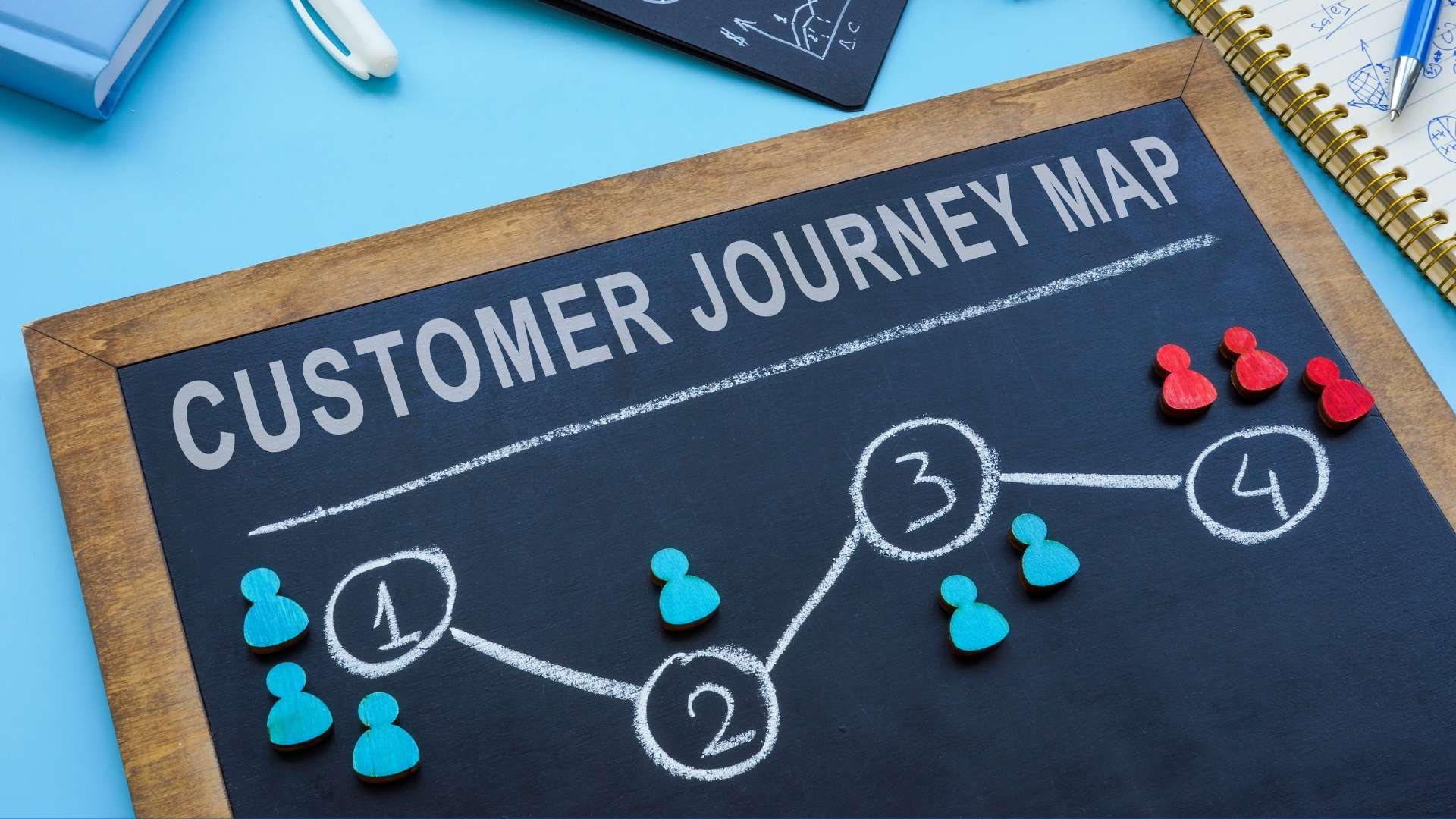
Identify all the touchpoints where users interact with your product or service. This can include websites, mobile apps, customer support, social media, and more.
Consider the various channels through which users engage, such as web, mobile, in-store, phone, or email.
Determine how you will represent the user journey over time. You can use a chronological timeline to show the sequence of events or interactions, helping you visualize the user’s progress.
Plotting User Actions and Emotions
Identify the critical actions users take at each touchpoint in the journey. This may include actions like searching, clicking, signing up, making a purchase, or contacting customer support.
Note how users transition between touchpoints and the pathways they follow.
Use visual cues or annotations to capture the emotional states of users at different points in their journey. Understand when users feel delighted, frustrated, confused, or satisfied. This helps in identifying areas that need improvement.
Adding Context and Pain Points
Make pain points and areas of friction clearly visible on the map. This could include points where users abandon a process, encounter errors, or experience delays.
Annotate these pain points to indicate the specific issues or challenges users face.
Consider why users engage with your product or service in the first place. What motivates them to start and continue their journey? Understanding user motivations provides context for their actions and decisions.
Mapping Multiple Scenarios
Recognize that different users may follow slightly different paths or encounter unique scenarios based on their needs or circumstances.
Map out these variations to ensure that your User Journey Map reflects the diversity of user experiences.
Incorporate the perspectives of different user personas you’ve identified in the research phase.
Show how each persona’s journey may differ, emphasizing the unique goals, needs, and pain points of each group.
Choosing the Right Tools
Paper and pen.
Pros: Paper and pen offer simplicity and flexibility, allowing for quick sketching and brainstorming. They are accessible to everyone.
Cons: Hand-drawn maps may lack polish, and it can be challenging to make digital copies or updates.
Digital tools and software
Pros: Digital tools like graphic design software or dedicated journey mapping software offer precision, scalability, and the ability to create professional-looking maps. ProductGo is a Jira plugin that supports Agile User Story Maps, Roadmaps & Persona for Jira , the User Journey Map will come shortly.
Cons: Learning curve for complex software, potential cost, and the need for access to specific software licenses. With a simple user interface, users can quickly get used to ProductGo with many features and a very reasonable price.
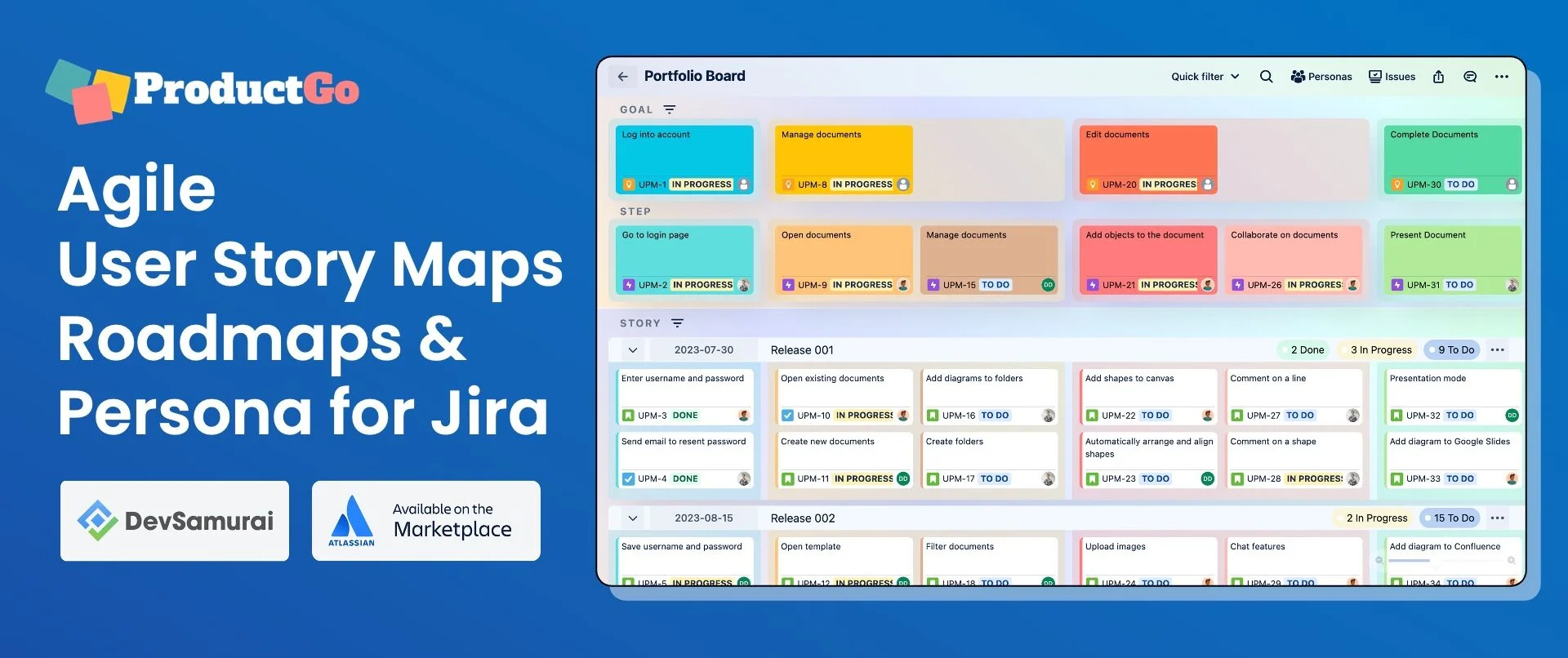
Collaborative Mapping
Collaborative journey mapping involves representatives from various departments such as design, marketing, customer support, and development.
It ensures that the map considers diverse perspectives and encourages buy-in from all stakeholders.
Organize workshops or brainstorming sessions to collectively create the User Journey Map.
Encourage open discussions, creative thinking, and idea generation to identify pain points and improvement opportunities.
Use techniques like affinity mapping or SWOT analysis to consolidate insights and ideas.
Here is the basic instruction for creating the user journey map, for both digital and non-digital use:
Sketching and Drafting
Start by creating an initial, rough draft of the User Journey Map. Use your chosen tools (paper, digital software, or specialized journey mapping software) to sketch out the key touchpoints and user actions.
This draft should capture the basic structure and flow of the user’s journey, serving as a starting point for more refined versions.
Recognize that User Journey Maps are dynamic and evolve over time. Begin the process of iterative improvement by gathering feedback from stakeholders and team members.
Continue refining and revising the map based on new insights, research findings, and user feedback.
Adding Details
Enhance the User Journey Map by including direct quotes from user interviews or surveys. These quotes can provide authenticity and empathy to the map.
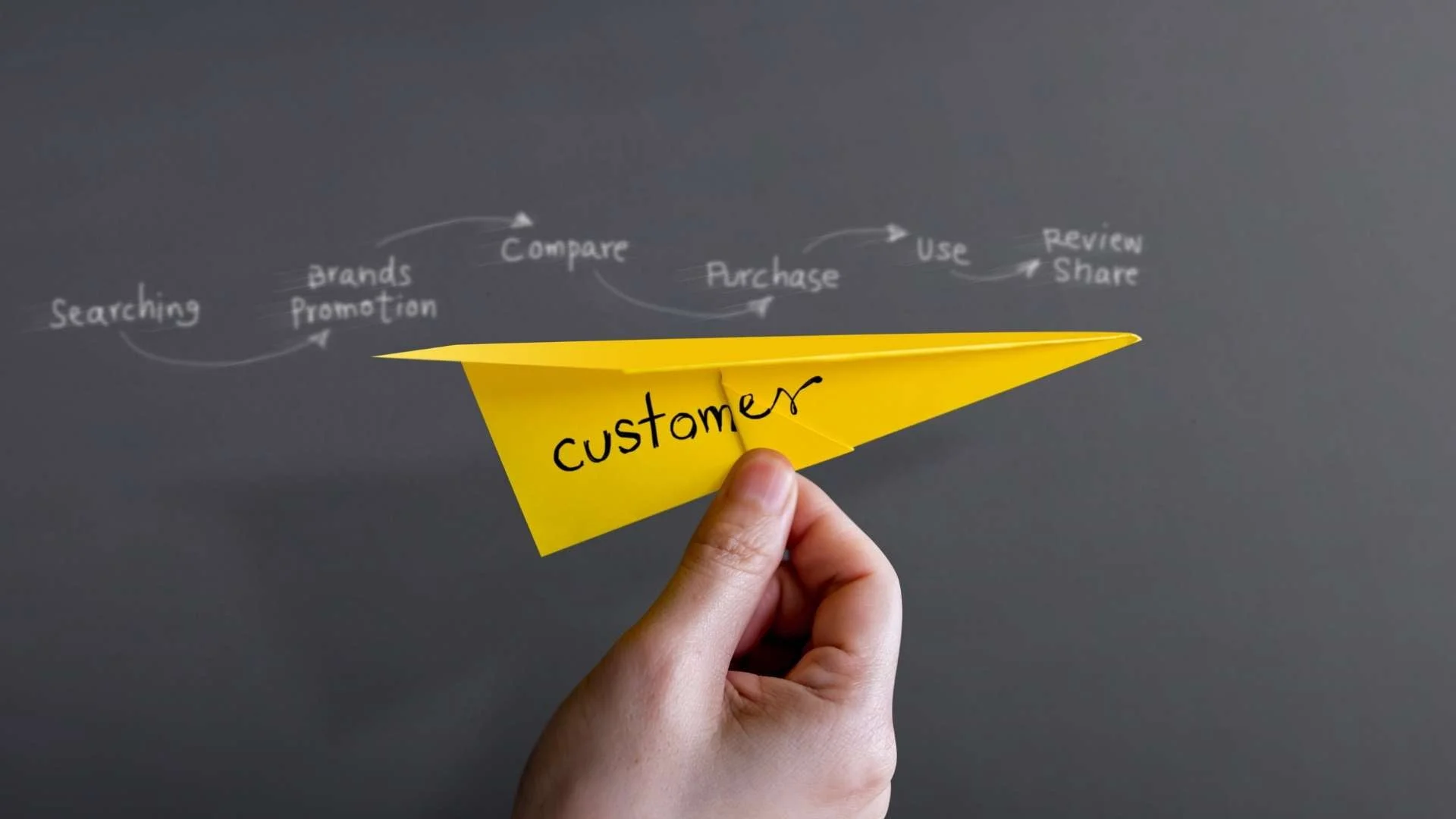
Consider placing quotes at relevant touchpoints to illustrate user emotions and thoughts throughout their journey.
Add annotations or comments to specific touchpoints to highlight pain points and opportunities for improvement.
Describe why certain actions or interactions are causing frustration or satisfaction, and note potential solutions or enhancements.
Visual Elements
Icons, symbols, and color coding:.
Use icons and symbols to represent key actions, touchpoints, or emotions in the User Journey Map. For example, use a magnifying glass icon for search actions or a frowning face for pain points.
Color coding can help distinguish different phases, personas, or emotional states within the map. For instance, you might use red for pain points and green for positive experiences.
Graphical representations of emotions:
Visualize user emotions using graphical elements. You can include emoticons or facial expressions at relevant points in the journey to convey how users feel.
Consider using a spectrum of emotions to indicate the evolving emotional state of the user as they progress through the journey.
Identifying Insights
Patterns and trends.
- Analyze the User Journey Map to identify recurring patterns and trends in user behavior and emotions.
- Look for common touchpoints where users experience delight or frustration and identify sequences of actions that lead to specific outcomes.
- Patterns can reveal what is working well and what needs attention.
Opportunities for improvement
- While reviewing the map, pay special attention to pain points, bottlenecks, and areas where user satisfaction dips.
- Identify opportunities for improvement, innovation, or optimization. Consider how changes in the user journey can lead to a better user experience.
Gathering Stakeholder Feedback
Share the User Journey Map with relevant stakeholders, including team members, executives, and subject matter experts.

Encourage stakeholders to provide feedback and insights based on their expertise and perspectives.
Collect feedback on the accuracy of the map, the alignment with business goals, and the feasibility of proposed improvements.
Making Revisions
Updating the map based on insights.
- Incorporate the insights gained from the analysis and stakeholder feedback into the User Journey Map.
- Make revisions to address pain points, capitalize on opportunities, and refine the representation of the user’s experience.
Reflecting changes in user journeys
- Recognize that user journeys are not static; they evolve due to changes in technology, user behavior, or external factors.
- Periodically revisit and update the User Journey Map to reflect any changes in the user journey, ensuring its continued relevance.
A User Journey Map, also known as a Customer Journey Map or User Experience (UX) Journey Map, is a powerful tool for visualizing and understanding the user’s interactions, emotions, and experiences while engaging with a product, service, or system. By following a structured process that includes understanding the user, mapping their journey, selecting the right tools, and analyzing and iterating based on insights, organizations can create a user-centric approach to design and improve customer experiences.
Whether using traditional pen and paper, digital tools, or specialized software, the process remains centered on empathy for the user and a commitment to refining and adapting the journey over time. By adopting User Journey Mapping as a practice, organizations can build stronger connections with their users and ultimately achieve greater success in the competitive landscape of today’s user-focused world.
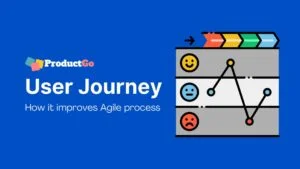
Leave a Reply Cancel reply
Your email address will not be published. Required fields are marked *

Agile Product Owner’s Role and Responsibilities

What is a sprint backlog? How to create one, with examples

What is Epic in Agile?

What is the difference between product backlog and user story?

What Is Agile Project Management And How To Apply This For Your Project?

Improve Project Management with AI

What User Story Mapping Tools Match for Your Project?

Optimizing Project Management with User Story Maps: Harnessing AI’s Power

ProductGo’s New Subscription Plan in 2024
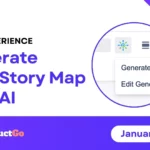
Advanced Project Planning with AI User Story Mapping
Good design is actually a lot harder to notice than poor design, in part because good designs fit our needs so well that the design is invisible, serving us without drawing attention to itself. Bad design, on the other hand, screams out its inadequacies, making itself very noticeable. —Don Norman, The Design of Everyday Things
Design Thinking
Design Thinking is a customer-centric development process that creates desirable products that are profitable and sustainable over their lifecycle.
It goes beyond the traditional focus on the features and functions of a proposed product. Instead, it emphasizes understanding the problem to be solved, the context in which the solution will be used, and the evolution of that solution.
Traditional waterfall approaches to product development are sequential: requirements are defined, and solutions are designed, built, and delivered to the market. The focus tends to be on the most apparent problems. Often, success is determined by implementing a solution that meets the requirements instead of the user’s needs. This results in products and services with unusable or ignored features that frustrate users and fail to meet the enterprise’s business goals .
Design thinking (Figure 1) represents a profoundly different approach to product and Solution development, in which divergent and convergent techniques are applied to understand a problem, design a solution, and deliver that solution to the market.
Design thinking also inspires new ways to measure the success of our efforts:
- Desirable – Do customers and end-users want the solution?
- Feasible – Can we deliver the right solution through a combination of build, buy, partner, or acquire activities?
- Viable – Is the way we build and offer the solution creating more value than cost? For example, in a for-profit enterprise, are we profitable?
- Sustainable – Are we proactively managing our solution to account for its expected product-market lifecycle?
Successive applications of design thinking advance the solution over its natural market lifecycle, as shown in Figure 2.
Understanding the Problem and Solution Space
In Figure 1, the core design thinking processes appear as a ‘double diamond.’ This represents the focus on thoroughly exploring the problem space before creating solutions. Each diamond focuses on divergent thinking (understanding and exploring options) followed by convergent thinking (evaluating options and making choices).
The activities associated with exploring the problem are elaborated as follows:
- Discover – The discover phase seeks to understand the problem by engaging in market and user research to identify unmet needs. This research creates fresh perspectives that drive innovation. Unlike research that confirms or refutes a hypothesis, the inquiries associated with the discovery phase occur without preconceived notions about how users should work. Instead, it focuses on how users work . An essential research technique is Gemba, also known as ‘going to the place where the work is done.’
- Define – The define phase focuses on the information gathered during the discover phase to generate insights into specific problems and unmet needs. These create opportunities for the business and new product development. Results of this phase typically include personas and empathy maps (described below) that focus the product team on the solutions the Customer would view as desirable. Epics and Features capture the perceived changes needed for existing products and solutions.
With a clear understanding of the target market and its problems, the focus can move toward designing a solution, the second diamond of design thinking. These are:
- Develop – The develop phase uses journey mapping, story mapping, and prototyping to design potential solutions to problems quickly and cost-effectively. Each of these techniques is discussed more thoroughly later in this article. The develop phase also embraces SAFe Principle #3 – Assume variability; preserve options. Design thinking techniques preserve options responsibly.
- Deliver – The deliver phase produces artifacts suitable for creating the solution and varies based on context. These artifacts often start as prototypes expressed as validated features in the ART Backlog for continuous delivery.
Using Personas to Focus Design
Creating solutions for a direct customer—bespoke solutions—offer designers the advantage of speaking directly and frequently with a few target users, permitting them to participate in the design, PI Planning , System Demos , and other SAFe events. In some organizations, Customers are considered part of the team, so creating a Persona to represent them isn’t typically needed but may be helpful when the organization is highly distributed.
In contrast, in an indirect customer market, which is common in B2C solutions, product teams need a way to maintain a connection with their target customers. So, they develop ‘personas,’ fictional consumers and users derived from user research. [2] They depict the people who might similarly use a product or solution, providing insights into how real users would engage with a solution. User personas also support market segmentation strategy by offering a concrete design tool to reinforce that products and solutions are created for people. Personas drive product development and several SAFe practices, as shown in Figure 3.
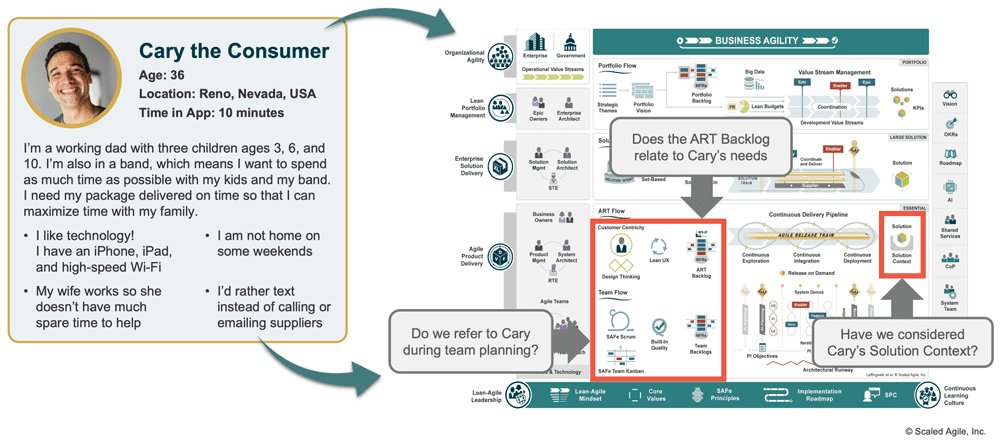
In addition to user personas, buyer personas extend design thinking to include the individuals and organizations that authorize purchasing decisions. They help ensure that the design encompasses the whole product purchase experience, including after-sales service, support, and operations.
Establishing Empathy to Foster Customer-Centric Design
Customer-centric enterprises use empathy throughout the design process. Empathetic design dismisses preconceived ideas and uses the Customer’s perspective to inform solution development.
Empathy maps [1] are a design thinking tool that promotes customer identification by helping teams develop a deep, shared understanding of others (Figure 4). They enable teams to imagine what a specific persona is thinking, feeling, hearing, and seeing as they use the product. The greater the degree of empathy a team has for its customers, the more likely it will be able to design desirable solutions.
Designing the User Experience through Journey Maps
A customer journey map illustrates the user experience in an Operational Value Stream that provides products and services. Figure 5 shows how these journey maps are powerful design thinking tools. They allow teams to identify ways the specific deliverables for one or more Development Value Streams can be improved to create a better end-to-end user experience.
Delivering Benefits Through Features
While a journey map captures the high-level experience of the Customer in the operational value stream, product features manage the specific deliverables that fulfill a stakeholder’s need. Features are commonly described through a features and benefits (FAB) matrix , using short phrases that provide context and a benefit hypothesis. Design thinking, however, promotes switching the order of the FAB to a benefit-feature matrix . In this case, the intended customer benefits are identified first, and then the teams determine what features might satisfy their needs. This approach helps Agile Teams explore better and faster ways to deliver the desired benefits (Figure 6).
Designing User Workflows or Journeys through Story Maps
Features that capture a workflow or user journey present a unique challenge to Agile teams. Because the backlog is a flat, one-dimensional list, it does not show the relationship between the user’s goals, workflow activities, and the stories in the backlog. Story mapping is a brainstorming technique that can enable teams to design a solution focused on the Customer. Not all features will require story mapping. However, they are particularly useful for developing new end-user functionality for a workflow or customer journey.
Why Story Maps?
Story maps help teams ideate, plan, and group activities in a workflow or user journey . They allow teams to address the most critical steps before improving existing steps or adding new functionality. Story maps are an important design thinking tool that enables Customer Centricity because they focus on delighting a user instead of merely implementing stories ordered by their value. Another benefit is avoiding releasing a feature (or solution) that is not usable because its functionality depends on stories that are lower in priority and further down the backlog.
Figure 7 illustrates how a feature with a workflow is captured in a story map [3], organizing the sequence of stories according to the activities (or steps) a user needs to accomplish their goal. The first set of stories is essential for the initial release, while the next set represents improvements for future releases.
How to Create a Story Map
The following steps describe the process of creating a story map (Figure 7) for a new potential Feature that requires a workflow.
- Frame the purpose : Identify the goal or customer problems the solution will solve and the intended users of the solution.
- Map the whole story : Define the starting conditions for the user to accomplish their goals. Focus on describing the whole story and user activities and tasks, creating the backbone of the story map.
- Brainstorm : Fill in the body of the story map by breaking down the larger user tasks into smaller subtasks and user interface details. Consider many possibilities without concern if the stories are in or out of scope. Affinity group the stories needed to complete the task under each activity.
- Identify the stories essential for the initial release : The team identifies which stories can be released (in the next iteration or two) that will achieve a meaningful user outcome.
- Identify stories considered as improvements in future releases : Stories that are not selected for the initial release will be added to the backlog as potential candidates for future releases.
Increasing Design Feedback Through Prototypes
A prototype is a basic functional model of a feature or product, usually built for demonstration purposes or as part of the development process. It helps the team clarify their understanding of the problem and reduces risk in designing and developing the solution before making further investments. Prototypes provide many benefits:
- Fast feedback. By definition, a prototype is cheaper and faster to produce than a complete solution. This enables faster feedback from users and customers, increased understanding of solution requirements, and greater confidence in the final designs.
- Risk reduction. Prototypes can reduce technical risk by enabling Agile teams to focus initial efforts on the aspects of the solution associated with the highest risk.
- Intellectual property/patent filing. Prototypes can be used to satisfy strategic requirements for managing intellectual property as early as possible in the development process.
- Models for requirements. Prototypes can provide more clarity in the requirements of the desired feature or solution than pages of documentation.
There are many kinds of prototypes, each optimized to provide different types of insights:
- Paper prototypes are typically hand-drawn sketches of the intended solution. They can be automated to illustrate workflows or validate user story maps.
- Mid-Fi prototypes are visually-complete representations of software-centric solutions but are not typically functionally integrated.
- Hi-Fi prototypes are visually-complete and interactive models which users and customers can directly explore.
- Hardware prototypes provide critical feedback on form factors, sizes, and operational requirements. For example, when exploring form factors to see how a new tablet might fit into existing backpacks, briefcases, and cars, one Silicon Valley company cut many plastic models from a single sheet of plastic. Later in this design process, this same team found they needed to redesign the power supply so that it would not unduly interfere with the WIFI signal.
Last updated: 13 February 2023
Privacy Overview
- My Storyboards
Story Mapping for Agile Development
What is agile development.
Agile Development is an approach to software development that focuses on rapid feature rollouts with constant iterations based on interdepartmental consultations and user feedback. It is a project management framework that is based on incremental developments with each stage in the process being tested, and basing the next iteration or product pivot on the feedback or results of the end users.
Story Maps and Agile Development
Understanding what agile development is is just the beginning—it's incorporating it into your business practices that's the important part. A great way to implement the agile approach into your project management practices is to associate visuals along with agile development. One common visual to start with are user story maps . User story maps are visual depictions of users interacting with your product and the responses or actions your UX elicits in users as they work to achieve a goal or objective. Creating story maps for your users forces you to break your product down into incremental stages, allowing you to focus on how iterative changes can be applied to each stage independently to improve the product as a whole. Story maps can take different forms: linear journeys as the user walks through your product, non-linear cycles, or even graphs depicting time or priority along the x-axis and complexity of the task on the y-axis.
Types of Agile Development
Scrum is an agile development methodology that focuses on time-boxing project tasks into sprints (typically 1-4 weeks in length) and allows developers to roll out new features with a predetermined cadence. Typical practices of organizations using scrum are daily stand-up meetings, sprint kickoffs, and post-sprint reviews.
Kanban is an agile development methodology that includes a visual backlog of prioritized tasks that need to be completed in order to finish a project. As soon as these tasks are completed they are released, resulting in continuous product iterations and releases. Developers have the choice to pull tasks most closely related to their field of expertise and tasks that are not time-boxed.

How to Story Map for Agile
Isolate a Project
The first step in implementing agile development practices is to choose a project to work on. Agile development works best on complex projects with many moving parts. Choose a project that may require interdepartmental collaboration and the creation/implementation of a number of new features. Then choose a scrum master , the person who will be in charge of making sure the project is moving according to plan.
Create a Task Backlog
The next step is to create a list of all of the required tasks that the project will need in order to be complete. After all of the tasks have been listed out, organize them by importance and priority. Often there will be tasks that are impossible to complete without completing one of the other backlogged tasks first—your priority list should account for this. The task list will change and grow throughout the agile process as you realize more tasks that need to be completed and, on the other end, realize some tasks are unnecessary.
Divide Into Sprints or Create a Kanban Board
Now it's time to decide if you're taking the Scrum or Kanban approach. If you decide to go with Scrum, then divide your task lists into individual sprints. Limit your sprints to a maximum of four developer weeks, but aim for around two weeks. This will cut scope on your project and force developers to work on the most important tasks. If you go with Kanban, then create a Kanban board with all your backlogged tasks. Have developers go to the board and physically choose a task to claim as their own. Move the task through the board from "To-do", to "Doing", to "Done".
Get to Work
Start working! As developers and marketers begin to work together on their assigned tasks, it helps to have daily quick stand-up meetings. These meetings should be no longer than 10 minutes long and each participant should answer three core questions: What did you do yesterday? What are you doing today? Is there anything blocking you from accomplishing your tasks today?
Review Project, Process, and Repeat
After the sprint is over or a new feature is rolled out, review the project to make sure it is acceptable for user interaction. It's also essential to review the process as a whole and to be actively looking for ways to improve the efficiency or output of the process. After this is all done, repeat from the beginning on the next project or feature set.
Agile Templates to Get You Started

- Thousands of images
- Custom layouts, scenes, characters
- And so much more!!
Create a Storyboard
Open Agile Architecture™
- Open Agile Architecture
- Part 1: The O-AA Core
- 10. Building Blocks Overview
- 11. Agile Strategy
- 12. Agile Organization
- 13. Experience Design
- 14. Product Architecture
15.1. Moments of Truth
15.2. the human side, 15.3. the role of automation, 15.4. concluding words.
- 16. Lean Value Stream Mapping
- 17. Operations Architecture
- 18. Data Information and Artificial Intelligence (AI)
- 19. Event Storming
- 20. Domain-Driven Design: Strategic Patterns
- 21. Software Architecture
- 22. Software Defined Infrastructure
- Appendix A: Acronyms
15. Journey Mapping
This document uses the term “journey map” to refer to an alignment diagram , which is any map, diagram, or visualization that reveals both sides of value creation in a single overview [ Kalbach 2016 ]. Alignment diagrams have two parts: a description of an experience and a description of an enterprise product, with the interaction between the two. Journey maps and service blueprints are alignment diagrams.
Some touchpoints, such as a newsletter or an advertisement, do not allow users to interact. Interactions can be automated; for example, interacting with a chatbot in a self-care situation. Human-to-human interactions can be “in person” or conducted remotely using collaboration technology.
Figure 35 is an example of an alignment diagram which represents both sides of value creation.

Specifies the channel(s) that support(s) the interaction
Describes the actual or desired customer experience
Presents the needed features or functionalities
If the existing operations or software are not good enough to support the targeted experience quality, you have to settle for a lesser quality unless the supporting operations or software are improved.
The “Missing Features” line identifies the new functionalities that must be developed to deliver the expected customer experience.
Not all interactions are equal. Some interactions, referred to as “moments of truth”, matter more than others.
McKinsey defines moments of truth as:
Those few interactions (for instance, a lost credit card, a canceled flight, a damaged piece of clothing, or investment advice) when customers invest a high amount of emotional energy in the outcome [ Beaujean 2006 ].
How well or how poorly the enterprise handles moments of truth has a decisive impact on the quality of the customer experience. Moments of truth test the quality of operations because:
They require that at the same time employees respect service standards and show initiative to resolve a client’s problems, even though they may be unexpected
Lessons learned solving unexpected problems should be incorporated into service standards to help prevent similar problems from happening in the first place
Defects in existing processes and software are a frequent cause of poor customer experience
This document recommends using moments of truth to prioritize operational improvements [ Patton 2014 ].
Focusing on specific target outcomes is the secret to prioritizing development work.
The goal should be to maximize outcomes while minimizing costs by minimizing new features development. The focus on moments of truth gives the opportunity for cross-functional teams to develop their level of understanding of what really matters and to explore the space of solutions to discover the best way to deliver an outstanding experience.
This is illustrated with the example of a housing rental enterprise. The first moment of truth for new prospects is to be rapidly informed when available properties that meet their needs become available.
What does it mean to be informed rapidly? Is it to receive a choice of properties immediately? The next business day? How can the enterprise ensure the choice of property meets client needs? Answering these questions requires a deep understanding of client expectations and also the ability to determine which operating model improvements are required.
Generating a short list of available houses or apartments that meet needs most of the time is critical to the moment of truth. If clients rapidly receive a list containing mostly properties that do not match their needs, they will be rapidly disappointed. In order to prevent this, the enterprise needs a very large inventory. This may require the enterprise to develop new sources of rental properties that it can add to its inventory.
In addition to the large inventory requirement, new features are needed:
The enterprise needs access to an inventory of available housing for rent
That inventory must be updated in real time
Smart search algorithms that select properties on criteria such as the number of rooms or the distance to public transportation
Mistakes and errors are inevitable, but dissatisfied customers are not. Paradoxically, when a service defect such as a late delivery or a lost parcel is fixed, frustrated customers can become more loyal than they would if no problem had occurred.
The difficulty is to grant employees the freedom and the responsibility not to follow “standard operating procedures” when solving urgent or important customer problems. The enterprise needs to:
Give meaning and clarity of purpose to front-line employees
Influence the mindset of employees so they develop their emotional intelligence
Adjust the reward system to reinforce the right behavior
Design the work system so it has enough slack for employees to take the time to solve customer problems
Ensure this is considered as part of a broader transformation approach, such as the one described in Chapter 7 .
Digital technologies, in particular AI, dramatically expand the scope of what can be automated. Does this mean the automation potential should be pushed to its limits? Not necessarily; for example:
Automation increases the need for maintenance, which requires skilled workers
The impact of automating one task is felt beyond that one task
When automation is visible to the client it can change customer experience
New risks can emerge when automation fails; for example, when operators have lost essential skills
Automating requires a careful assessment of benefits and drawbacks. Instead of automating in a big bang manner, the Agile enterprise will conduct experiments and automate using an incremental approach when possible.
Automation failures come in two forms: misses and false alarms. For example, the system has failed to detect a harmful situation, or the system acted when it should not have.
A failure to detect can harm the customer; for example, a fraudulent payment not being prevented by an automated fraud detection algorithm. On the other hand, if the fraud detection algorithm disables a credit card when the client is abroad late at night and during a weekend, it becomes a service failure in the case of a false-positive.
Computers and humans have distinct abilities. Therefore, augmenting the human with the power of automation and AI could be a legitimate goal if the man-computer symbiosis is achieved.
When automation is used as an augmentative tool, it leaves decisions to humans. Now that deep learning scores better than humans in the accomplishment of many tasks, should there be a switch to fully-automated decisioning? What happens when an unforeseen event occurs that the machine is not capable of handling?
Journey mapping is a great tool to help align experience mapping with the operating system that is supposed to deliver it. When the mismatch between experience and target operating model cannot be solved locally, it is necessary to look at the operating system as a whole. Improving the human side and automating will often require a holistic approach.
← Previous: Product Architecture | ↑ Up: Part 2: The O-AA Building Blocks | ⌂ Home: Open Agile Architecture™ | Next: Lean Value Stream Mapping →
the future of Agile: what to expect in 2024 and beyond
What is agile, and how does it work, agile trends for 2024, agile for non-it teams, does agile have a future.
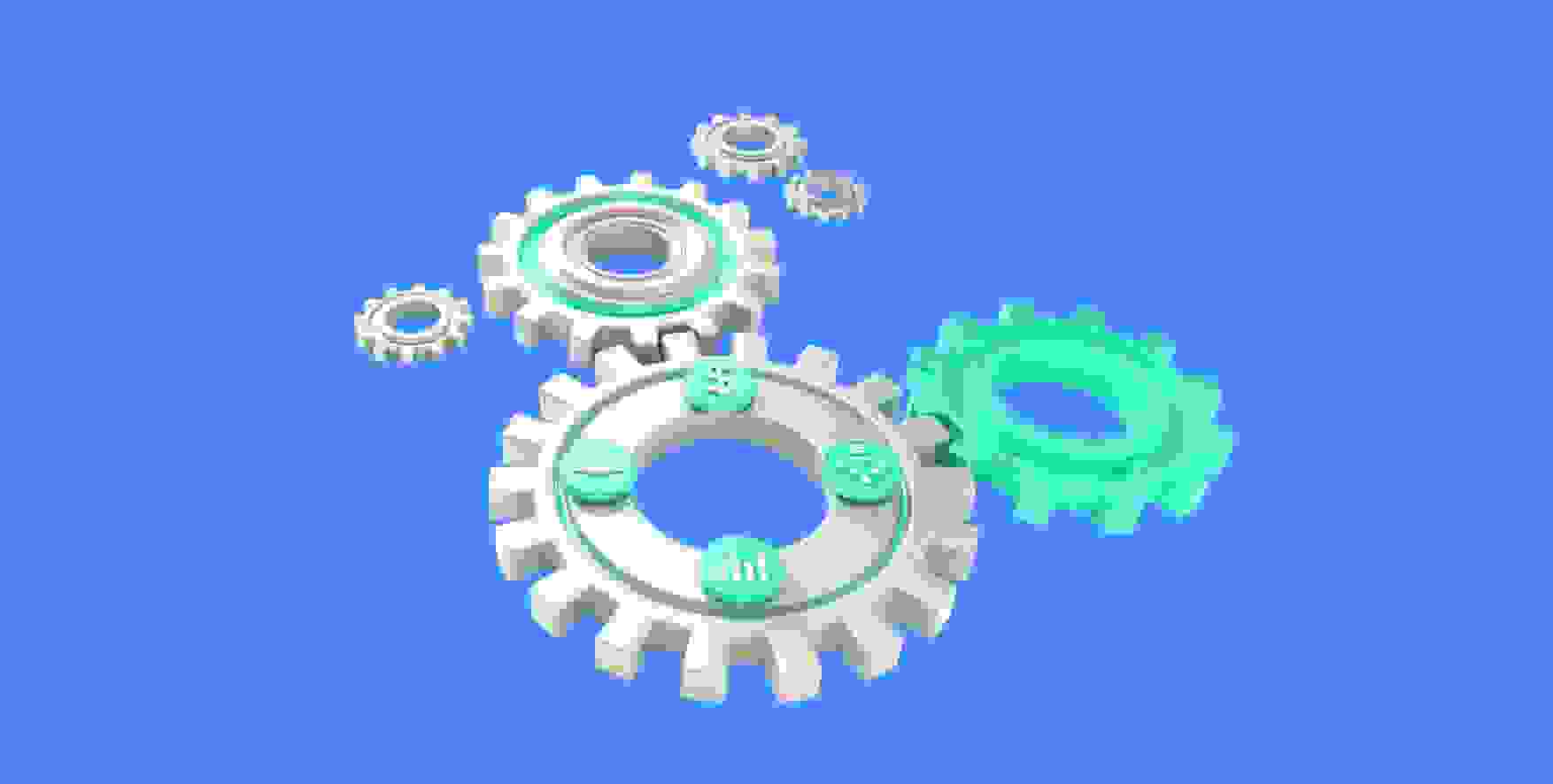
The EPAM Anywhere Editorial Team is an international collective of senior software engineers, managers and communications professionals who create, review and share their insights on technology, career, remote work, and the daily life here at Anywhere.
For good reason, Agile methodologies have become the dominant force in software development. A study by PwC says organizations are increasingly adopting Agile methodologies for IT development and ongoing maintenance, proving that they are:
- Twice as likely to succeed compared to traditional Waterfall methods.
- 50% more likely to meet deadlines and budgets.
If you’re looking to grow your career in Agile environments or seeking an Agile coach job , read further for a detailed look into the future of Agile and its current trends.
A business must be adaptive and receptive to change to succeed in an environment with shifting demands. Unlike other project delivery methods, Agile is a project management approach that prioritizes adaptability, collaboration, and delivering value early and often.
It's a shift from traditional linear methods where the entire project is planned upfront. Instead, Agile breaks projects into smaller, more manageable chunks called iterations.
Here is how that works:
- Iterations: The project is like a long journey, but instead of trying to map out the entire route at the beginning, Agile breaks it into smaller, manageable sections. Each iteration focuses on features or functionalities that deliver value to the end user.
- Cross-functional teams: Unlike traditional siloed teams, Agile management teams consist of members with all the skills necessary to complete a task within the team itself. This could include developers, designers, testers, and even product stakeholders. Everyone works closely together.
- Continuous feedback: After each iteration, there's a built-in feedback loop. The team gathers feedback on the work they just completed from users, stakeholders, and within the team itself. This feedback is then used to improve the product in the next iteration.
- Flexibility: Change is inevitable in projects. Agile is designed to be flexible and adapt to those changes. New requirements or adjustments to the existing ones can be incorporated throughout the project as needed, as long as they fit within the current iteration's scope.
Though it is not a one-size-fits-all approach, there are different Agile methodologies, like Scrum and Kanban, each with its own set of practices and ceremonies which exhibit some major advantages such as:
- Faster delivery: By working in smaller chunks, you deliver working features to users faster, allowing them to provide feedback early and often.
- Improved quality: The continuous feedback loop helps identify and fix issues early in development, leading to a higher quality product.
- Increased customer satisfaction: By involving stakeholders throughout the process, Agile ensures that the final product meets their needs and expectations.
- Reduced risk: Adapting to change helps reduce the risk of project failure since course correction can happen more frequently.
want to work with the latest tech?
Join EPAM Anywhere to revolutionize your project and get the recognition you deserve.
Agile is dynamic and continues to get more refined as people add good ideas to the process. So, let's explore what’s in store for Agile in 2024 and beyond.
Design thinking
Among the new Agile methodologies is design thinking. At the heart of the Agile methodology, design thinking is “a human-centered approach to innovation that draws from the designer's toolkit to integrate the needs of people,” as was said by the CEO of IDEO, Tim Brown.
This makes the ideology uniquely suited for integration within the Agile manifesto, which aims to put consumer needs and feedback at the forefront of development. In 2024, expect to see a rise in Agile design thinking, a hybrid approach that merges the best of both worlds.
The synergy between design thinking and Agile
- Shared focus on users: Agile and design thinking prioritize understanding and meeting user needs. Design thinking's human-centered approach perfectly complements Agile's iterative delivery cycles, ensuring solutions are constantly refined based on user feedback.
- Flexibility and iteration: Design thinking thrives on experimentation and prototyping like Agile. This allows both methodologies to adapt to changing needs and user feedback throughout development.
- Reduced risk: By integrating user insights early and often, design thinking helps identify potential issues before significant development happens. This reduces the risk of creating products that miss the mark.
Design thinking is a major Agile trend to watch for in 2024 and beyond, and here is how it might work:
- Integrate user research throughout the sprint: The design thinking stages of identifying the problem and developing user empathy would be weaved throughout the Agile sprint. Alongside development work, user research activities like usability testing and user interviews could be carried out.
- Rapid experimentation and prototyping: The team would then leverage design thinking's emphasis on rapid experimentation and prototyping. Gather rapid user feedback early in the sprint; this can entail building low-fidelity prototypes and then iterating on them in response to new information.
Some of the benefits of Agile design thinking include:
- Enhanced innovation via a culture that produces more imaginative and practical solutions by placing the user's demands first.
- Agile design thinking's iterative structure facilitates the early identification and resolution of problems, speeding up the development process.
- Agile design thinking ensures the finished product genuinely satisfies consumer wants and expectations by continuously incorporating user feedback.
The dominance of Scaled Agile (SAFe) and Scrum
Agile methodologies have truly revolutionized the software development landscape. However, when it comes to scaling Agile principles to larger Agile organizations and complex projects, two frameworks have emerged as frontrunners: Scaled Agile Framework (SAFe) and Scrum.
These remain the dominant forces in Agile trends for 2024 based on their strengths:
- Managing complex projects: Large organizations must manage intricate projects with numerous teams and dependencies. Scaled Agile frameworks like SAFe (Scaled Agile Framework) and LeSS (Large Scale Scrum) provide a solution and handle large-scale projects with intricate dependencies.
- Alignment and efficiency: These frameworks offer structures to coordinate work across multiple teams, ensuring everyone is aligned with the project managers’ overall goals. This fosters better communication, reduces duplication of effort, and improves overall project efficiency.
- Customization: Adjusts to different organizational situations and requirements.
- Simplicity and adaptability: Scrum's core principles — short sprints, cross-functional teams, and continuous feedback — remain powerful for managing projects of all sizes. Its simplicity makes it easy to understand and implement, even for teams new to Agile.
- Flexibility: Scrum is adaptable to various project types and team structures. While scaled Agile frameworks provide the structure for large-scale adoption, Scrum remains the foundation for individual project teams within those structures.
- Team empowerment: Fosters ownership and accountability within teams.
To wrap up, here are some limitations of Scrum and SAFe to keep in mind:
- Scaled Agile frameworks can be overly complex for smaller organizations or those new to Agile.
- Scrum might struggle with large-scale projects with intricate dependencies.
- Both frameworks can be implemented incorrectly, leading to inefficiencies.
We can expect the future of Agile to continue to grow within these methodologies. In 2024 and beyond, we can expect further evolution in these frameworks, including greater integration with emerging technologies like AI and DevOps , emphasis on continuous learning and improvement, remote collaboration tools and a focus on building a strong Agile culture within organizations.
AI and machine learning integration
AI and machine learning (ML) rapidly transform project management, and Agile is taking note. In 2024, expect to see a deeper integration of AI and ML into Agile practices, driving greater efficiency, innovation, and adaptability.
This is likely to be driven by AI-powered tools for Agile workflows such as:
- AI-powered insights: AI can analyze user feedback and project data to generate insights for improving development and user experience.
- Automated tasks: Repetitive tasks like data entry, progress reporting, and test case execution can be automated using AI, freeing team members to focus on higher-level strategic work.
- Predictive analytics: AI can analyze historical data to predict potential risks, identify bottlenecks, and recommend improvements to the Agile process. This allows teams to address issues and optimize workflows proactively.
Incorporating AI and machine learning in Agile carries many benefits, such as increased efficiency, improved quality, enhanced decision-making, and continuous improvement.
It, however, may be faced with some challenges and unique considerations that have to be made, such as data quality bias where the algorithm is only as good as the data they are trained on, therefore making it crucial to ensure data quality and mitigate bias.
There also arises a need to balance the use of AI and a human-in-the-loop approach because AI should not replace human expertise but instead augment team capabilities and free them for more strategic tasks.
As AI and ML technology matures, it will become even more seamlessly integrated into Agile practices, and we can expect to see:
- AI-powered collaboration tools: AI can facilitate better team communication and collaboration, especially in remote work environments.
- Personalized Agile experiences: AI could personalize the Agile experience for individual team members, suggesting best Agile practices and learning opportunities based on their roles and skill sets.
- Evolving Agile methodologies: Agile frameworks might adapt to leverage AI capabilities for enhanced planning, risk management, and project optimization.
Cloud agility and cloud-based solutions
Cloud agility and cloud-based solutions are set to be game-changers in Agile methodologies for 2024. This will be rooted in the ideal match cloud computing with such Agile principles as:
- Speed and flexibility: Cloud computing aligns perfectly with Agile's emphasis on speed and flexibility. Cloud resources can be easily provisioned and scaled, allowing teams to adapt to changing requirements quickly.
- Faster time-to-market: Cloud eliminates the need for lengthy on-premises infrastructure setup and configuration, enabling faster development cycles and product launches. This allows Agile teams to get new features and bug fixes into the hands of users faster, driving innovation and user engagement.
- Unleashed collaboration: Cloud-based tools dismantle geographical barriers, fostering seamless collaboration and knowledge sharing across geographically dispersed Agile teams. This is critical for successful Agile adoption, as effective communication and collaboration are essential for aligning team members, maintaining project momentum, and ensuring high-quality deliverables.
Cloud-based solutions for Agile teams
- Agile project management tools offer features like task tracking, communication tools, and visual dashboards, streamlining Agile workflows.
- Cloud-based CI/CD tools automate build, test and deployment processes, enabling faster and more reliable delivery of software updates.
- DevOps automation helps teams integrate development, operations and security teams, leading to improved collaboration and faster deployments. Learn how agile and DevOps interrelate to get more out of the dynamic.
In addition, as cloud technology evolves, we can expect:
- The rise of serverless computing: Serverless architectures eliminate server management tasks, allowing software development teams to focus on core functionalities, further accelerating development cycles.
- AI and ML integration in the cloud: Cloud-based AI and machine learning tools will become more sophisticated, providing Agile teams with deeper insights and automation capabilities.
- Cloud-native Agile methodologies: New Agile frameworks might emerge as specifically designed to leverage the unique advantages of cloud computing.
These trends are accompanied by major benefits such as cost efficiency by eliminating hardware and software costs, increased innovation where easier access to powerful computing resources fosters experimentation and innovation with Agile teams, and improved scalability because clouds scale up and down effortlessly, accommodating fluctuating project needs and team sizes.
Rapid feedback cycles
Rapid feedback cycles are the heart of Agile methodologies, and in 2024 we can expect them to remain critically important. They will continue to be the driving force behind Agile methods based on the following:
- Agile thrives on short iterations (sprints) that deliver working features quickly between users and stakeholders, enabling course correction and improvement in the next iteration.
- Rapid feedback fosters a culture of continuous improvement. Teams can identify shortcomings early and adjust their approach throughout development, leading to a higher-quality product.
In 2024, expect to see a surge in powerful tools and techniques that supercharge these feedback loops, enabling even faster learning and adaptation, such as:
- Real-time feedback tools: Explore in-app surveys, chatbots, or A/B testing to gather immediate user feedback during the experience.
- Data visualization dashboards: Use visualization tools to make complex feedback data clear and actionable. This empowers stakeholders to make informed decisions based on trends and patterns rather than intuition.
Business value-centric user stories
Business value-centric user stories are a hot trend in Agile 2024 because, unlike user-centric stories, they emphasize business value. They ensure efforts are directly tied to organizational goals, prioritizing features that will impact the business most.
When crafting business value-centric user stories, start with "As a..." but refine the goal focusing on outcomes, and quantify value whenever possible.
The benefits of business value-centric user stories include:
- Improved decision-making: By clearly understanding the business value of each story, stakeholders can make better decisions about resource allocation and project priorities.
- Increased transparency: Explicitly outlining business value fosters transparency and ensures everyone is aligned on project goals.
- Enhanced communication: Business value-centric stories facilitate communication between technical and non-technical stakeholders by translating user needs into a business context.

Read full story
Agile methodologies traditionally associated with software development are experiencing a surge in popularity across various industries. This is likely due to:
- Faster adaptability: The Agile approach emphasizes flexibility and rapid iteration. This allows non-IT teams to adapt to changing market demands, customer needs, and internal priorities much faster than traditional linear project management methods.
- Improved collaboration: Agile promotes cross-functional teams, breaking down silos and fostering better communication and collaboration between departments like marketing, sales, HR, and finance.
- Focus on value delivery: Agile prioritizes delivering value early and often. This ensures that non-IT teams constantly deliver results that contribute to the organization's goals.
- Increased transparency: Agile practices provide greater visibility into project progress, allowing stakeholders to track progress, identify roadblocks, and make informed decisions.
Agile advantages for non-IT teams
- Marketing: By using agile methodologies, marketing teams may improve the speed at which they create focused campaigns, refine their content according to audience feedback, and maximize marketing budgets.
- Sales: By utilizing Agile, sales organizations may enhance lead conversion rates, customize customer encounters, and create data-driven sales strategies.
- Human resources: Agile can help with continuous performance management, smooth onboarding of new hires, and streamlining processes.
- Finance: Agile can be used by finance teams to manage risks, forecasts and budgets, allowing them to respond to changes in the market more quickly.
Agile trends for non-IT Teams in 2024
- Focus on business value: Similar to IT teams, non-IT teams will prioritize user stories and initiatives that deliver measurable business value.
- Adoption of Agile frameworks: Frameworks like Scrum with Kanban boards will be adapted to suit the specific needs of non-IT teams.
- Metrics and data-driven decision making: Non-IT teams increasingly use data and metrics to track progress, measure success, and make informed decisions throughout the project lifecycle.
- Focus on team culture: Building a strong Agile culture that promotes collaboration, continuous learning and open communication will be critical for successful adoption across the organization.
Challenges and considerations
Transitioning from traditional methods to Agile requires a change in mindset, particularly for non-IT teams accustomed to more structured approaches. There may be resistance from team members or departments hesitant to adopt new ways of working. Clear communication and addressing concerns proactively can help overcome resistance, in addition to training and support.
At the same time, developing appropriate metrics for measuring success can be challenging for non-IT projects. Teams need to define what success looks like in their context.
Absolutely. Agile is at the forefront of shaping the models of future software development, projects, and even businesses. This can be attributed to its adaptability in a changing world, increased demand for speed, focus on value delivery, and widespread adoption.
While Agile isn't without its challenges, such as overcoming resistance to change or adapting frameworks to specific contexts, its benefits are undeniable.
Agile methodologies will continue to evolve and adapt. By embracing these Agile trends and addressing challenges, organizations can leverage Agile's power to thrive in the ever-changing world of 2024 and beyond.
Explore our Editorial Policy to learn more about our standards for content creation.
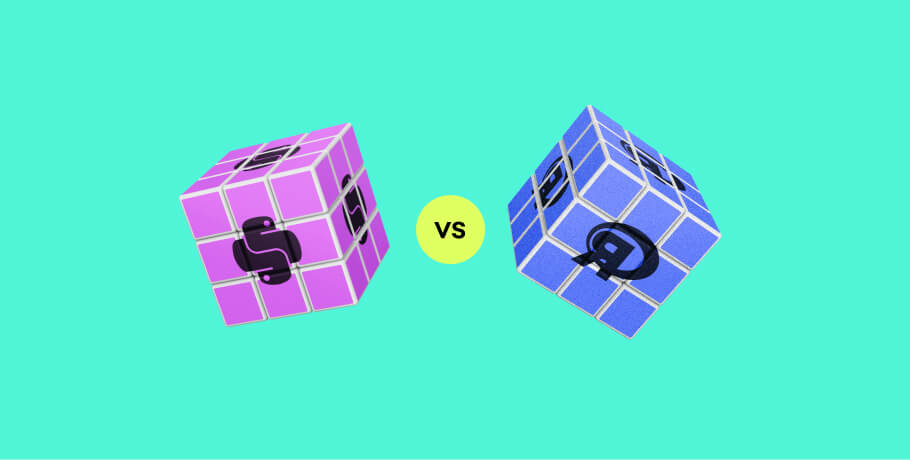
R vs Python in data science and machine learning
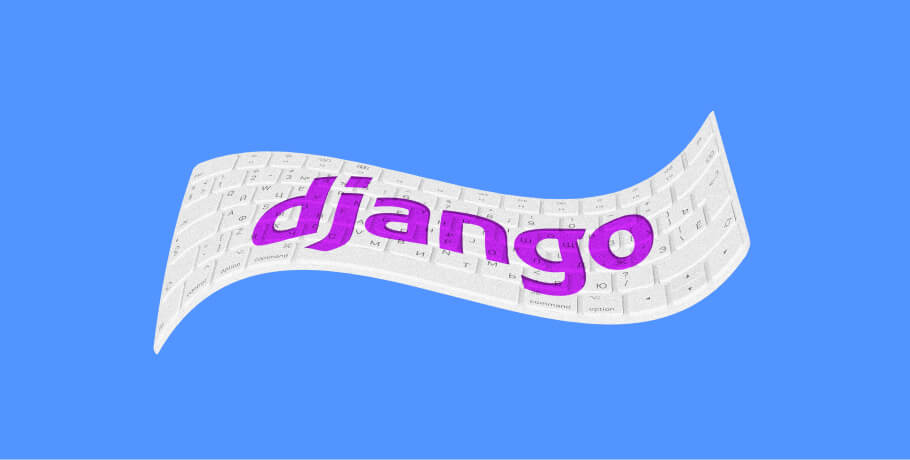
Django developer interview questions
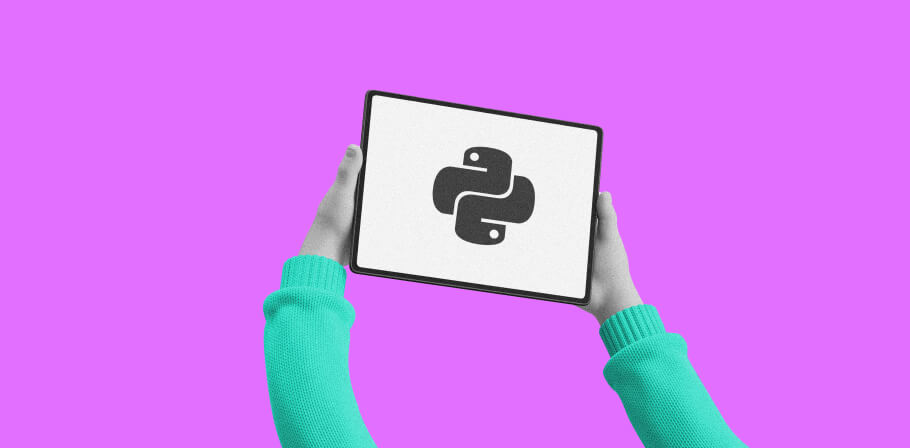
Python interview questions and answers
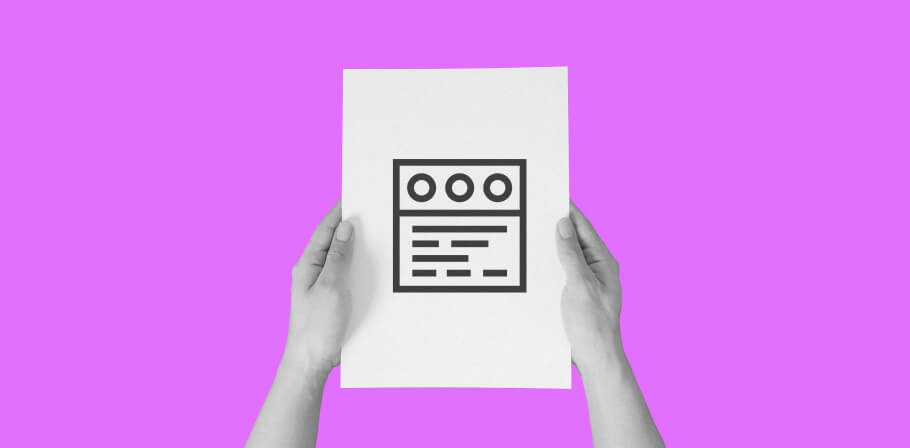
backend developer resume example
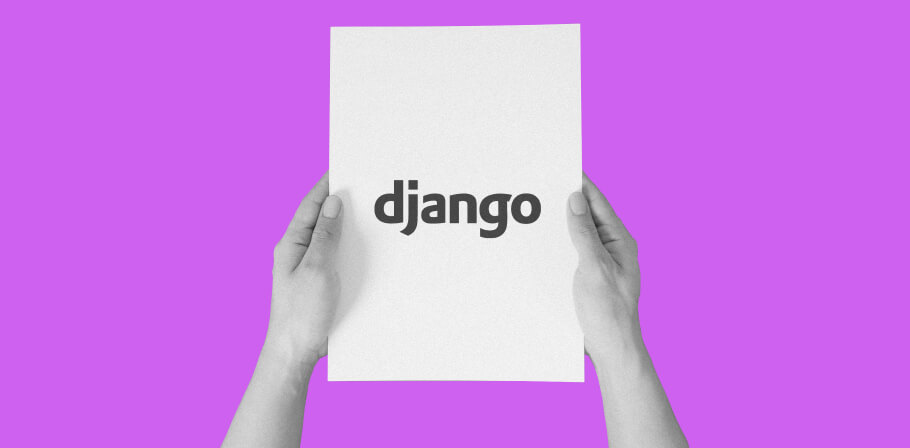
Django developer resume example

10 senior Python developer interview questions and answers

how to write a data engineer cover letter, with examples

how to create a job-winning software engineer portfolio

best react projects for a portfolio: from ideas to standout examples

Z-test vs T-test: the differences and when to use each

Ruby on Rails interview questions

data scientist interview questions and answers

24 unique JavaScript projects for portfolio

top resume-boosting Java projects for your portfolio

network engineer interview questions

Selenium developer interview questions

IMAGES
VIDEO
COMMENTS
Your user journey map hierarchy involves four building blocks to meet customers' needs: Understanding user personas or buyer personas. Developing themes and epics to address touchpoints. Using steps or features to support epics and the narrative flow. The stories in the customer journey map. 1.
User journeys evolve as products and user needs change, making it challenging to keep maps up to date. Solution: Schedule regular reviews and updates of user journey maps as part of your Agile process. Use feedback from user testing and customer support to inform updates. Make map maintenance a team responsibility.
The main job of a UX designer is to make products intuitive, functional, and enjoyable to use. By creating a user journey map, you're thinking about a product from a potential customer's point of view. This can help in several ways. User journey maps foster a user-centric mentality. You'll focus on how a user might think and feel while ...
User-Story Mapping vs. Customer-Journey Mapping. When I introduce user-story mapping during our UX Conference course Lean UX & Agile, practitioners often ask how it differs from customer-journey mapping. The key differences are that each map type is visualized from a different perspective and they're used for a different purpose.
Columns capture the five key stages of the user journey: awareness, consideration, decision, purchase, and retention (see below). Rows show customer experiences across these stages—their thoughts, feelings, and pain points. These experiences are rated as good, neutral, and bad. To see how this works, consider a practical example.
Definition of a Journey Map. Definition: A journey map is a visualization of the process that a person goes through in order to accomplish a goal. In its most basic form, journey mapping starts by compiling a series of user actions into a timeline. Next, the timeline is fleshed out with user thoughts and emotions in order to create a narrative.
User Story Mapping is a valuable tool for creating product roadmaps. By visualizing the user journey and prioritizing features, teams can develop a roadmap that outlines the product's evolution over time. This roadmap serves as a strategic guide, helping teams set priorities and communicate the product's direction to stakeholders.
Story Mapping or User Story Mapping is a technique used in product discovery: outlining a new product or a new feature for an existing product. The result is a Story Map: all the user stories arranged in functional groups. This helps you keep your eye on the big picture while also providing all the details of the whole application.
The 8-Step Process of User Journey Mapping. Choose a scope. Create a user persona. Define the scenario and user expectations. Create a list of touchpoints. Take user intention into account. Sketch the journey. Consider a user's emotional state during each step of the interaction. Validate and refine the user journey.
Step 3: Identify and group activities. Step 4: Break large tasks into subtasks. Step 5: Fill in the blanks. Step 6: Prioritize tasks and subtasks (but leave your backbone as is) Step 7: "Slice" groups of tasks into iterations. How to turn your user story map into a development strategy.
Reducing churn rate for paying customers. 2. Build personas and define your user's goals. Develop at least one persona you'll use as your primary model. The more specifics you create about the behavior of your different users across the personas you identify, the better and more detailed your user journey map will be.
A User Story Map is a collaborative practice that guides an agile team in the creation of their product backlog. The story map captures the journey a customer takes with the product including activities and tasks they undertake. Creating the storymap as a team ensures team members are on the same page from the start of development through to ...
Set the stage (5 min) It's really important that your group understands the user persona and the goal driving their journey. Decide on or recap with your group the target persona and the scope of the journey being explored in your session. Make sure to pre-share required reading with the team at least a week ahead of your session to make sure everyone understands the persona, scope of the ...
Here's what Nick covers in this article: In this post we'll explore the aspects of a successful Story Map. A User Story Map is a collaborative practice that guides an agile team in the creation of their product backlog. The Story Map captures the journey a customer takes with the product including activities and tasks they undertake.
User Story Mapping is a collaborative approach in agile software development that involves visualizing a product or system's features from the user's perspective. Spearheaded by Jeff Patton, this technique employs user stories, a backlog, and a user map. The user map is a horizontal depiction of the user's journey through the system ...
User Journey Maps aim to capture the user's perspective and highlight critical moments and pain points in their journey. User Journey Mapping is crucial in user-centered design and improving customer experience. Understanding the User. First of all, let's find out how we understand users through these ways. Conducting User Research
This approach helps Agile Teams explore better and faster ways to deliver the desired benefits (Figure 6). Figure 6. Design thinking promotes switching the order of the FAB to a benefit-feature matrix Designing User Workflows or Journeys through Story Maps. Features that capture a workflow or user journey present a unique challenge to Agile teams.
Scrum. Scrum is an agile development methodology that focuses on time-boxing project tasks into sprints (typically 1-4 weeks in length) and allows developers to roll out new features with a predetermined cadence. Typical practices of organizations using scrum are daily stand-up meetings, sprint kickoffs, and post-sprint reviews. Kanban. Kanban is an agile development methodology that includes ...
Open Agile Architecture™. 15. Journey Mapping. This document uses the term "journey map" to refer to an alignment diagram, which is any map, diagram, or visualization that reveals both sides of value creation in a single overview [ Kalbach 2016 ]. Alignment diagrams have two parts: a description of an experience and a description of an ...
User journey maps are being used increasingly in this complex customer-driven economy. A user journey map is a visual that depicts the typical user journey as they interact with the organization ...
In agile, customer journey mapping can help businesses in three ways. First , your product manager gains insights into customer behavior by visualizing the customer journey, for starters.
Iterations: The project is like a long journey, but instead of trying to map out the entire route at the beginning, Agile breaks it into smaller, manageable sections. Each iteration focuses on features or functionalities that deliver value to the end user. ... Business value-centric user stories are a hot trend in Agile 2024 because, unlike ...